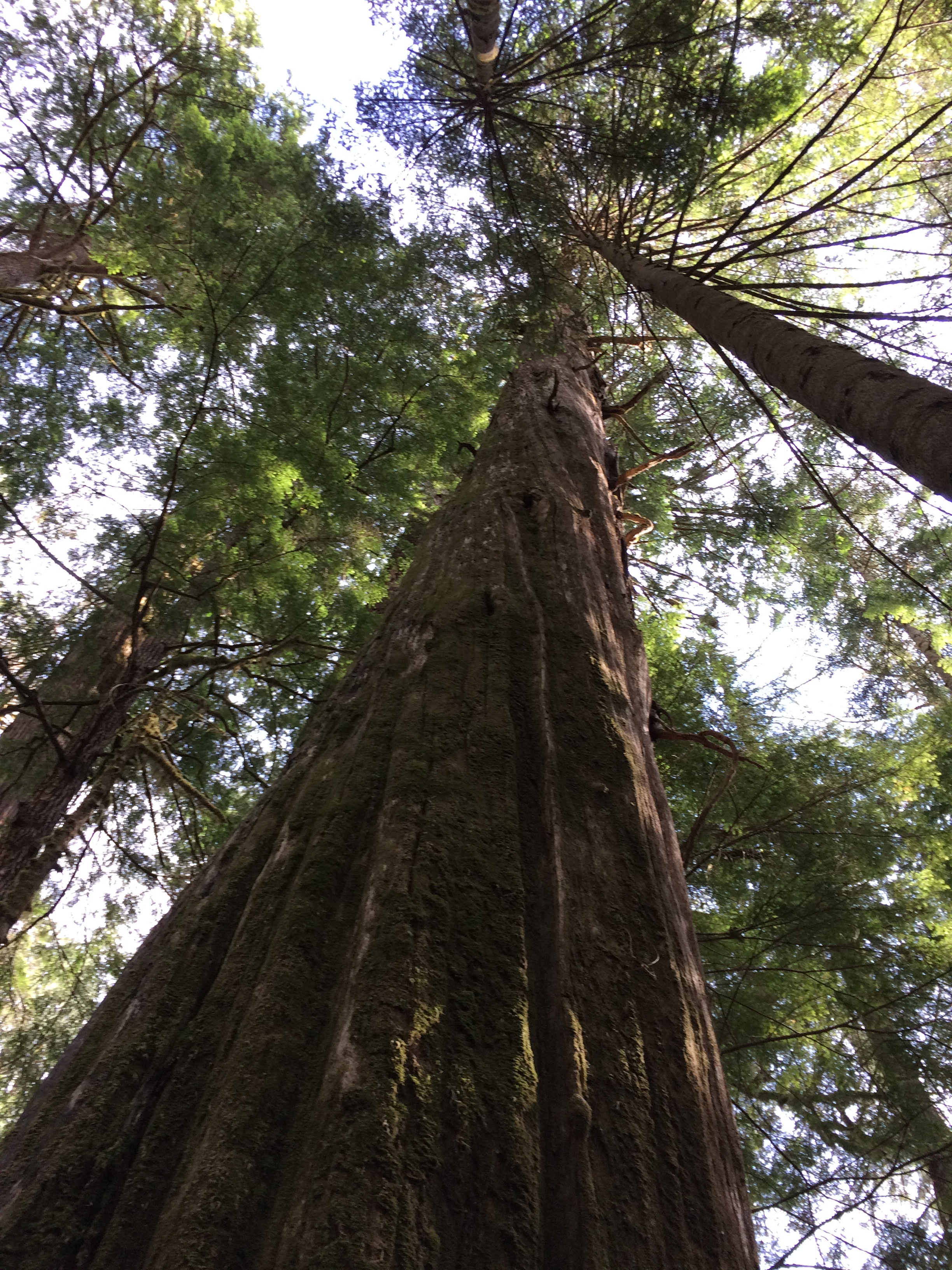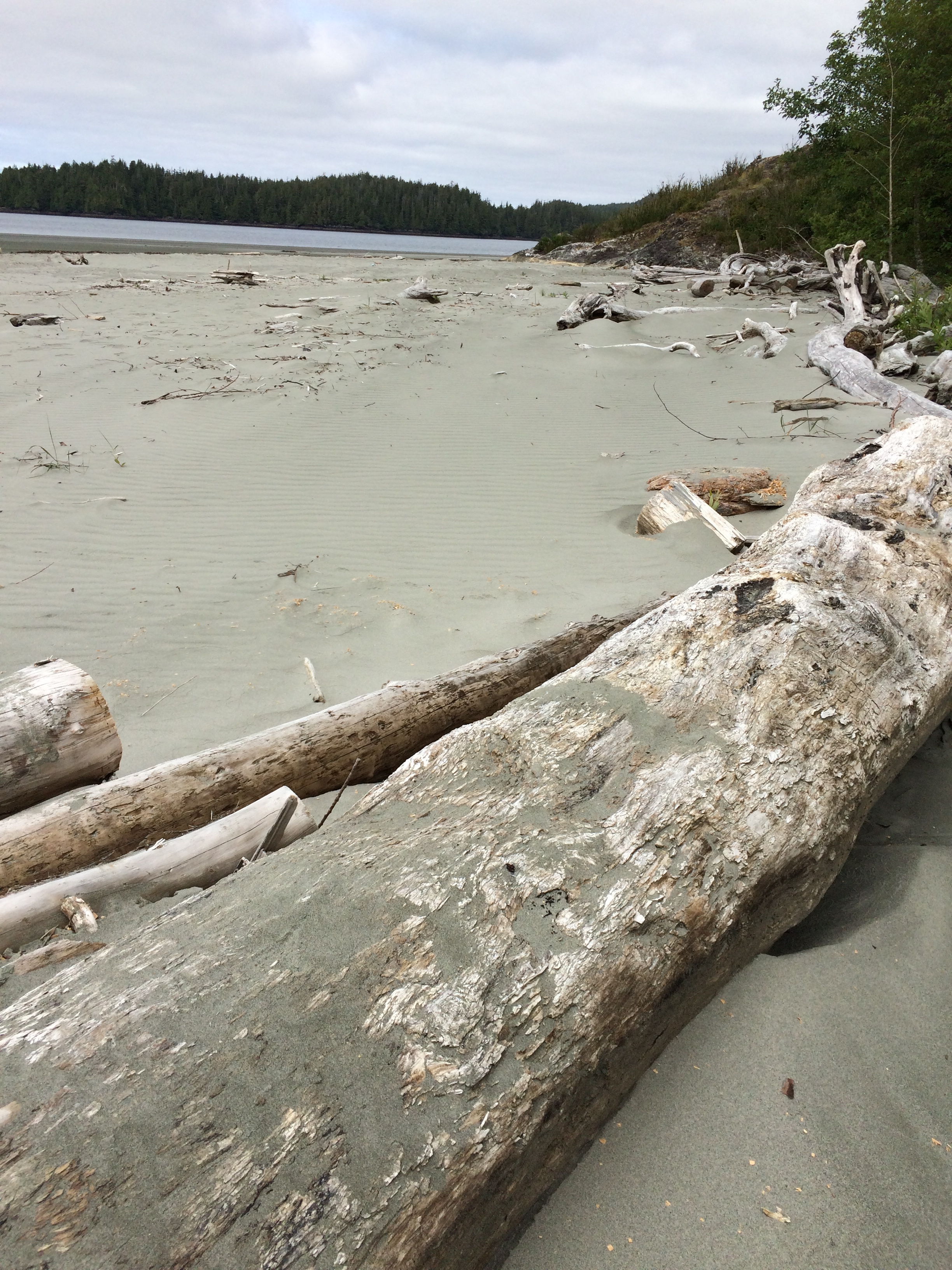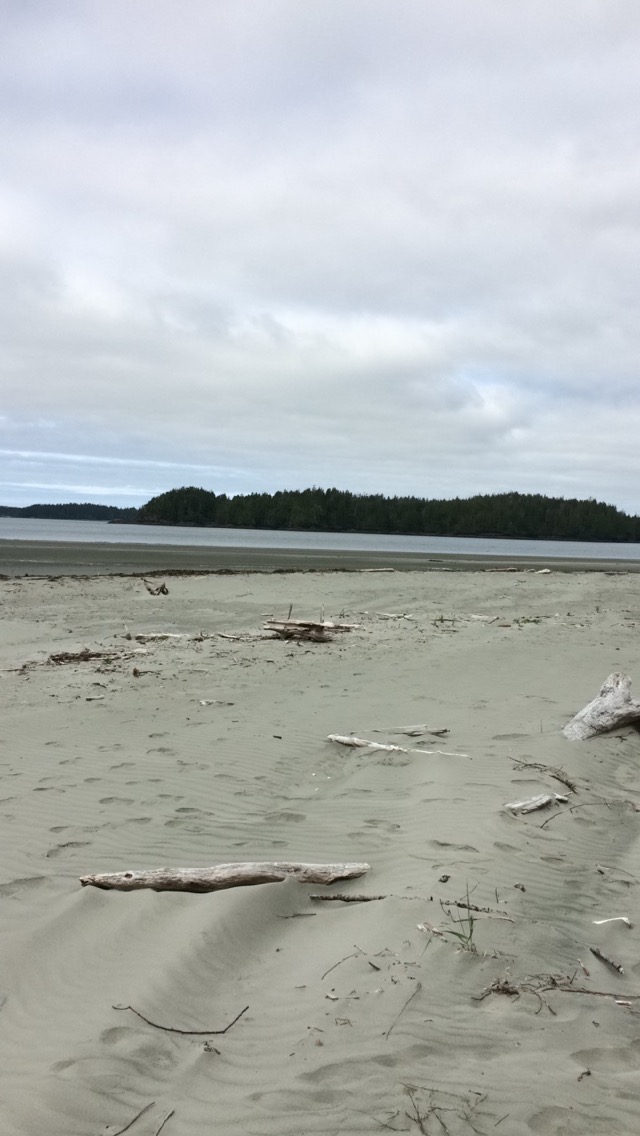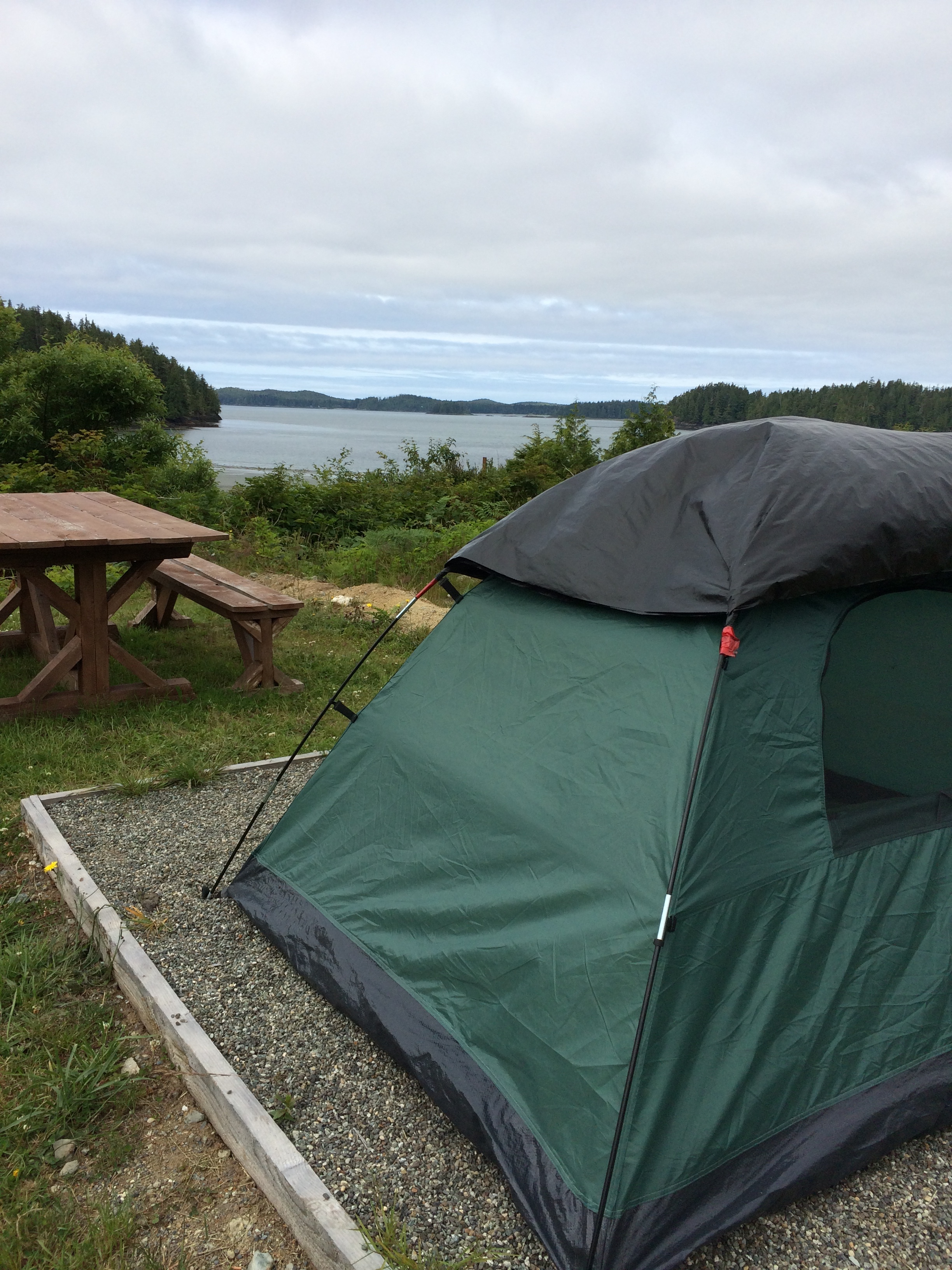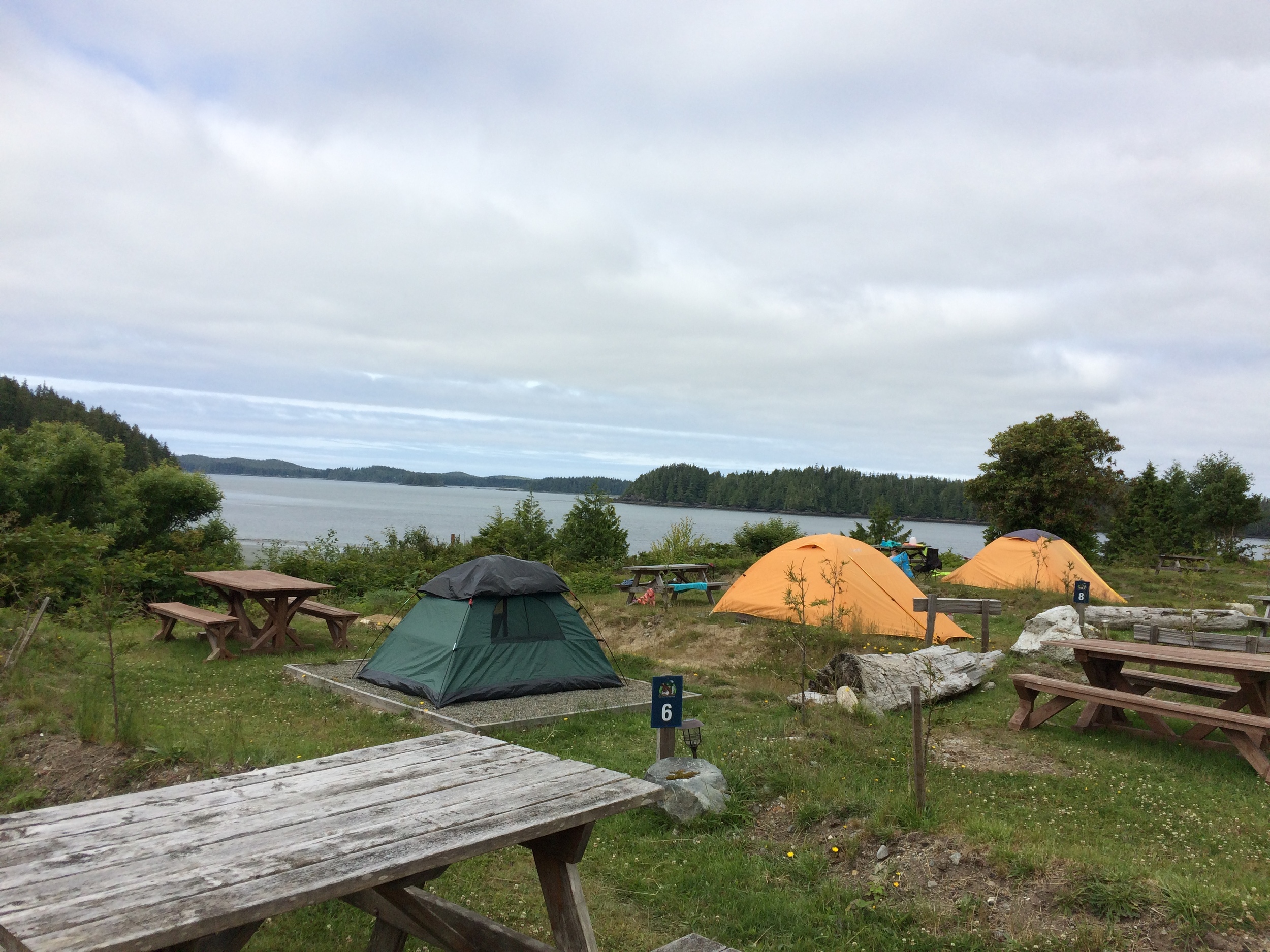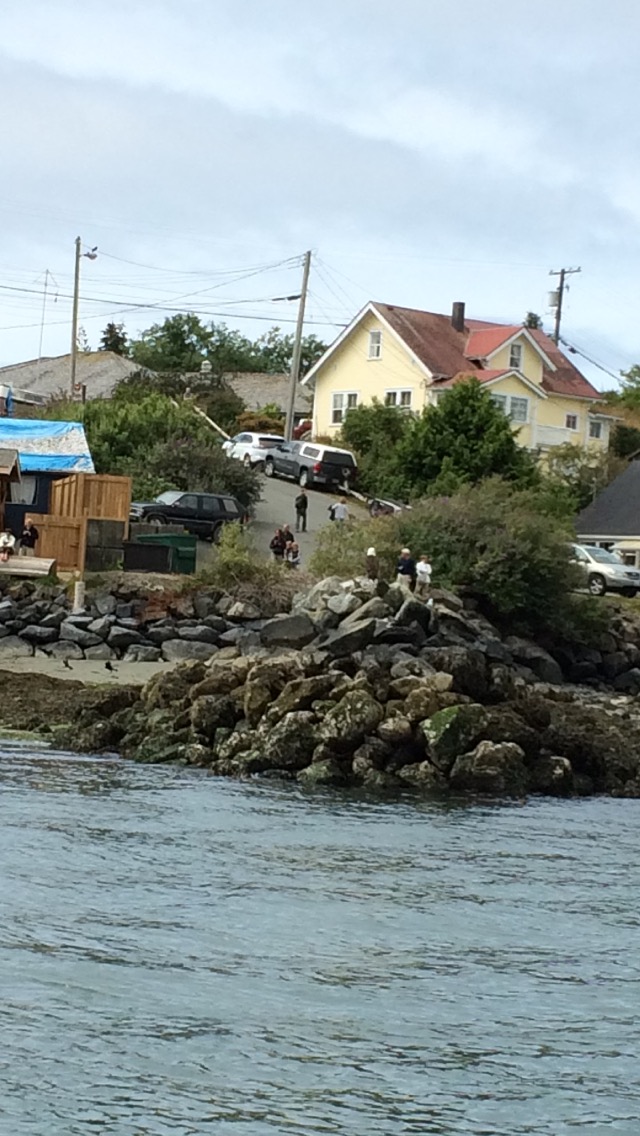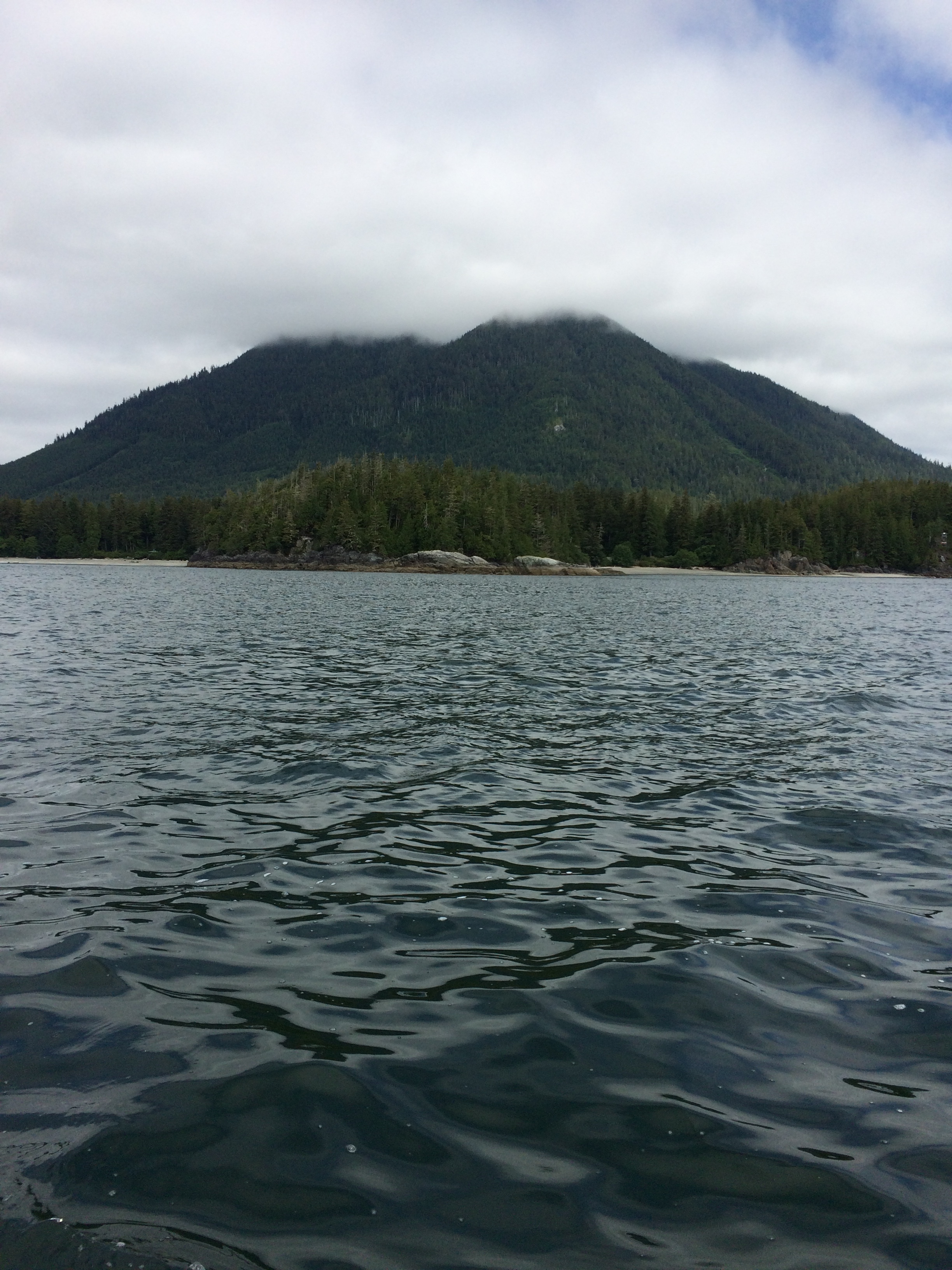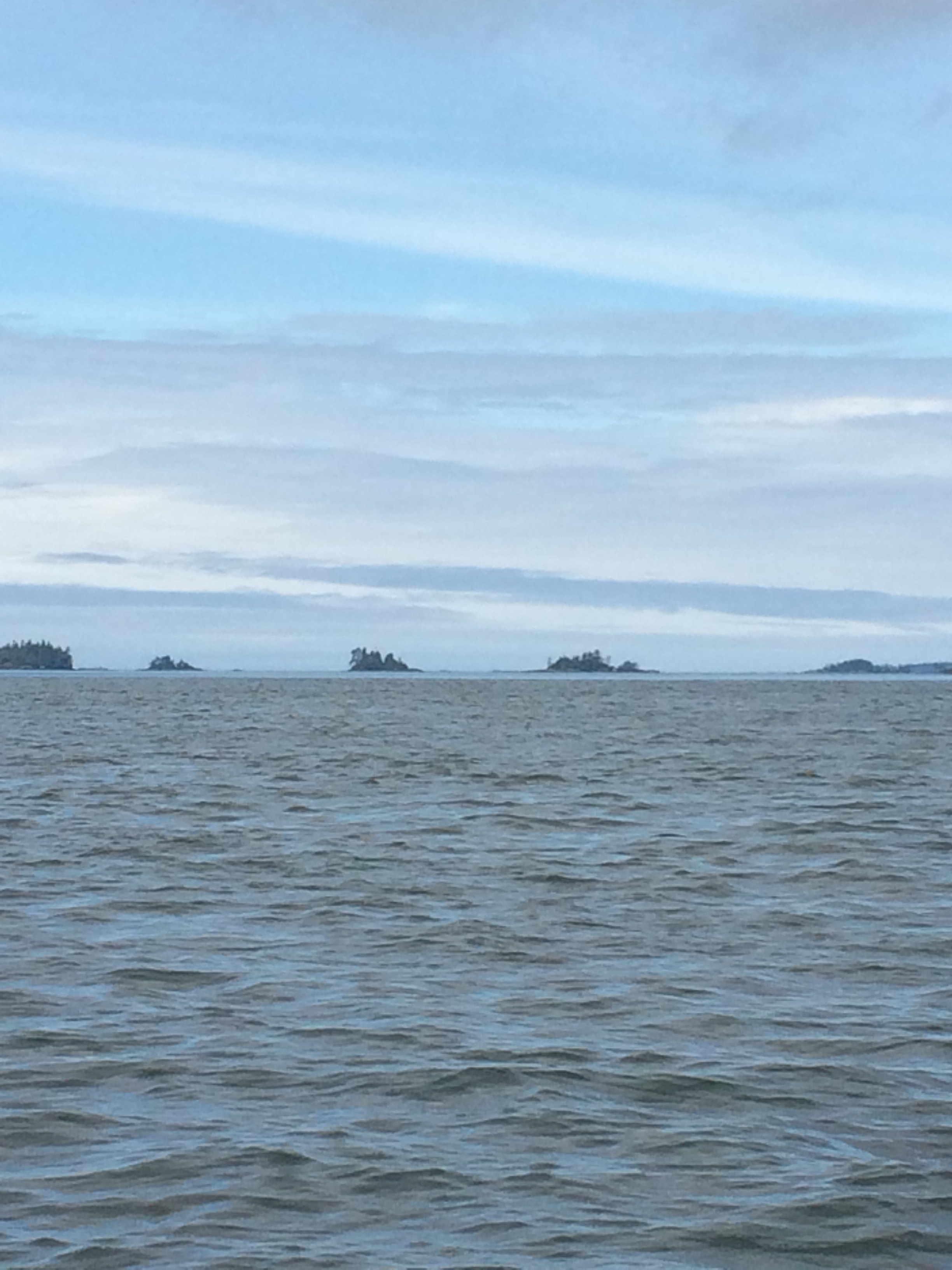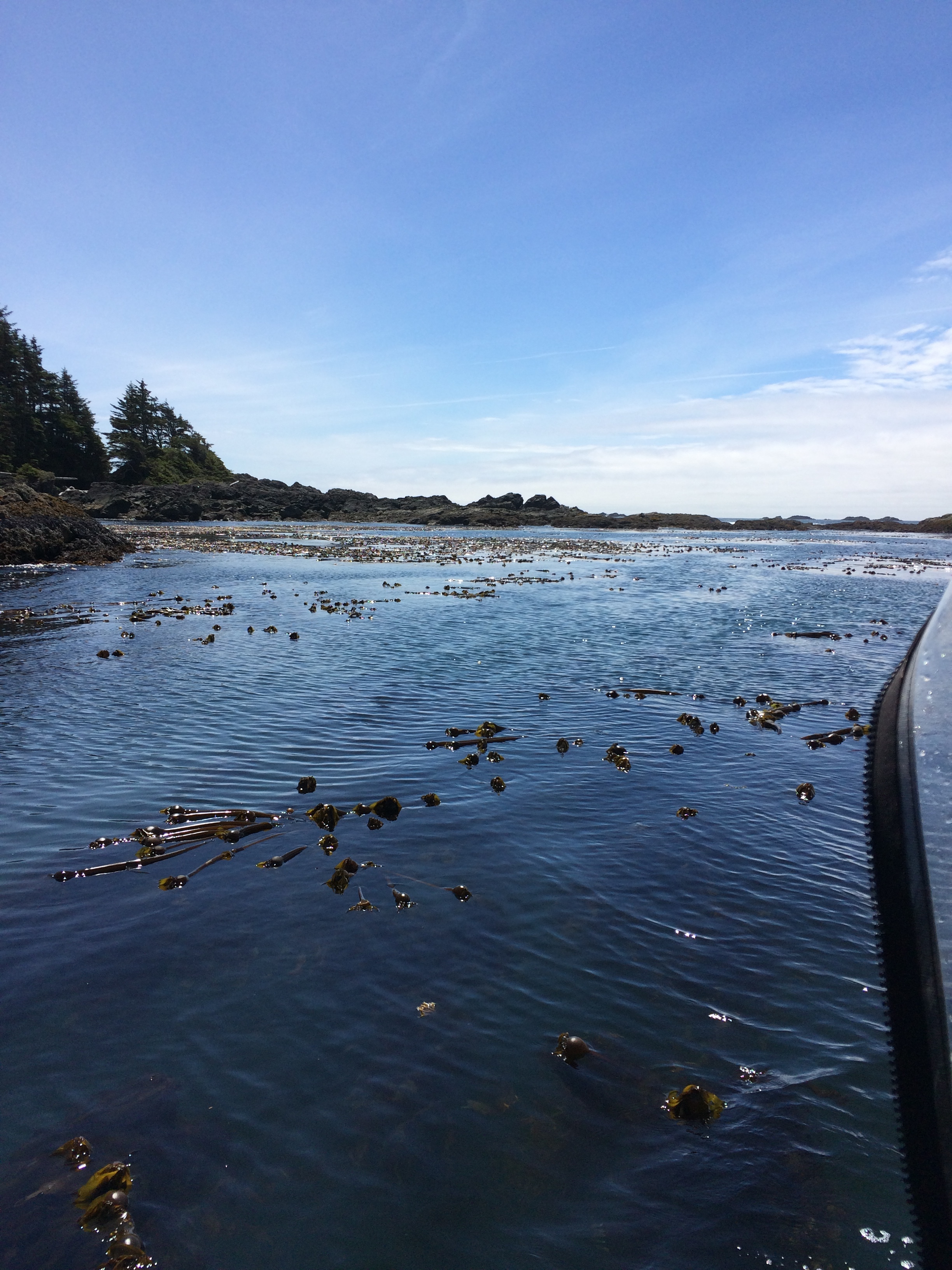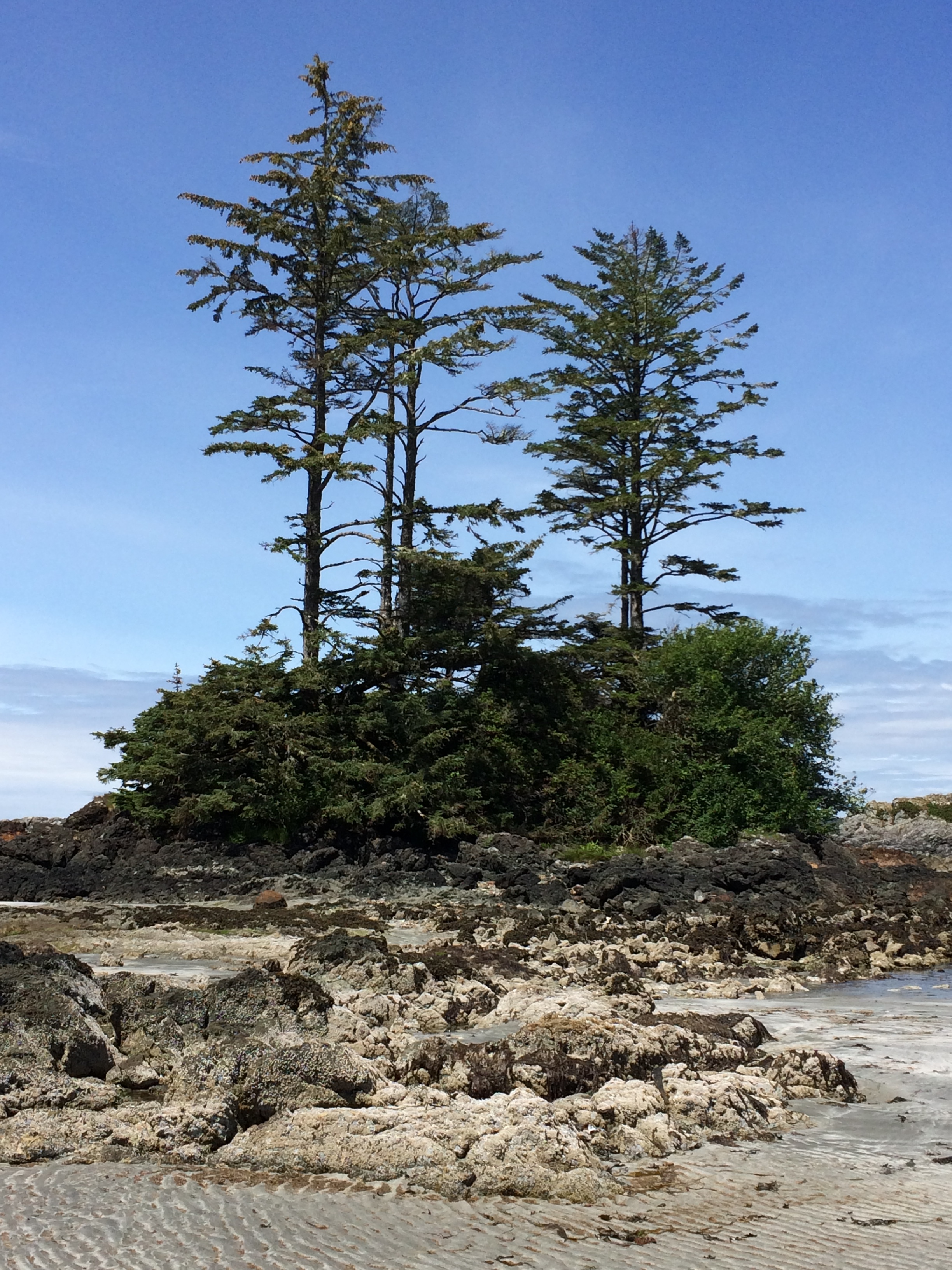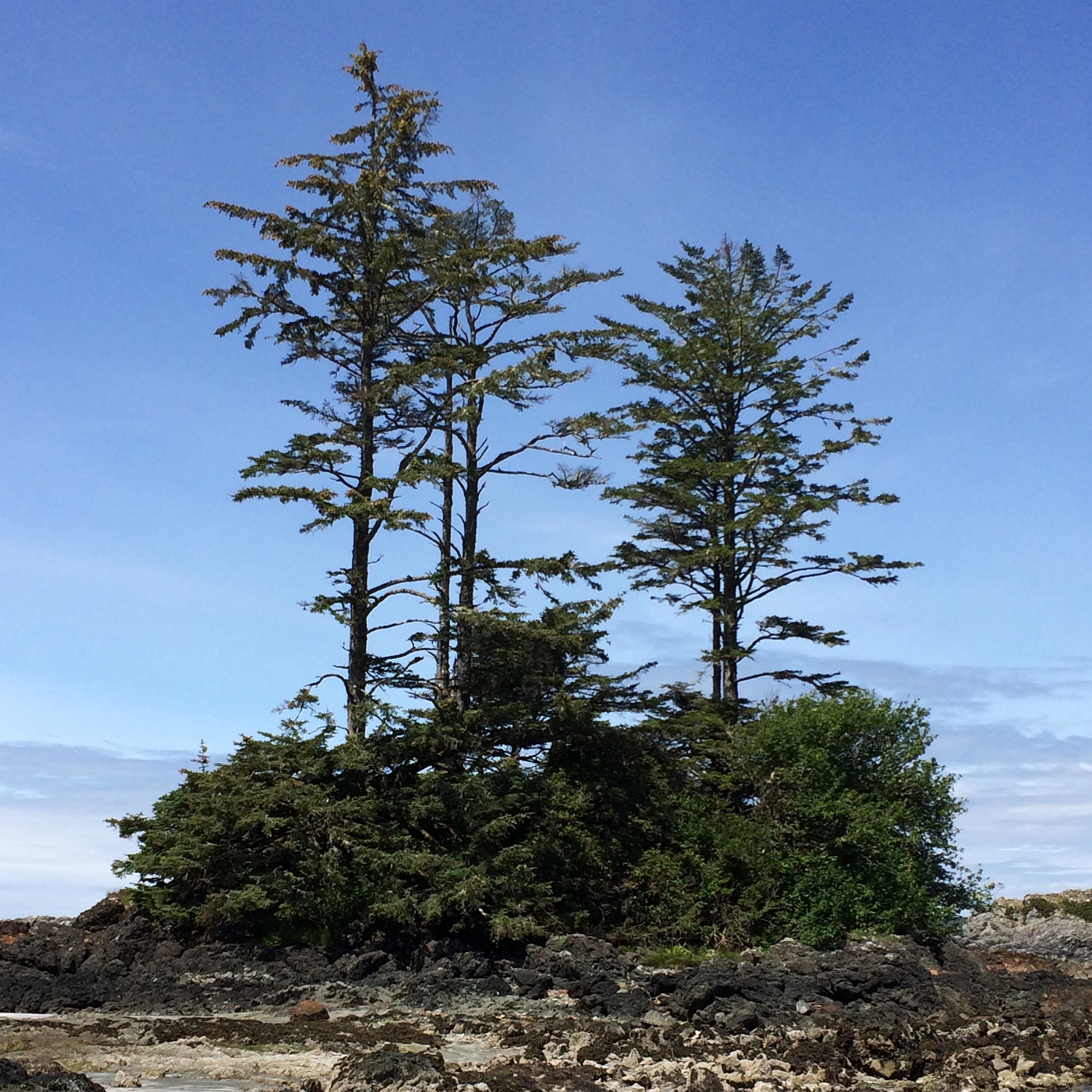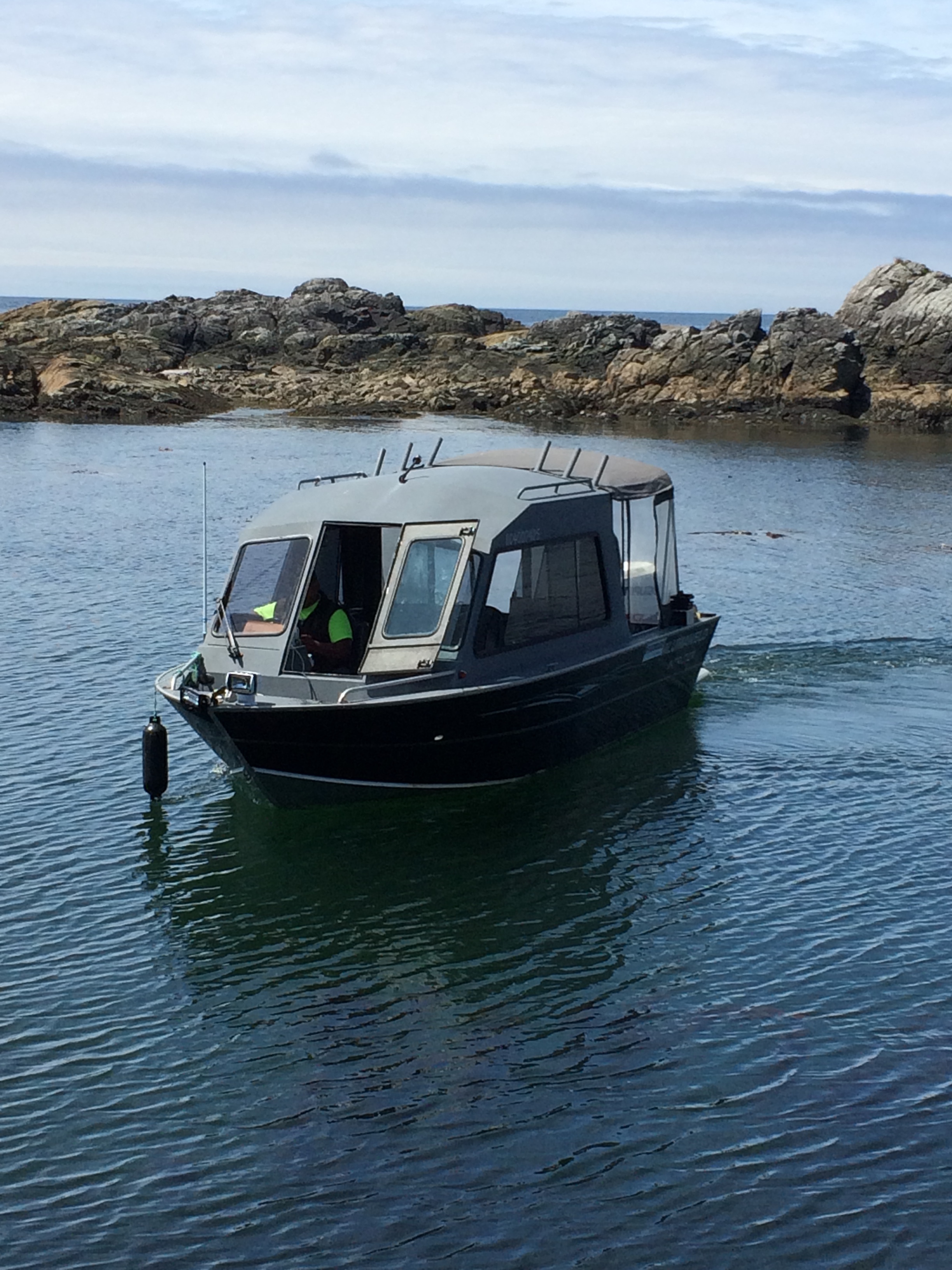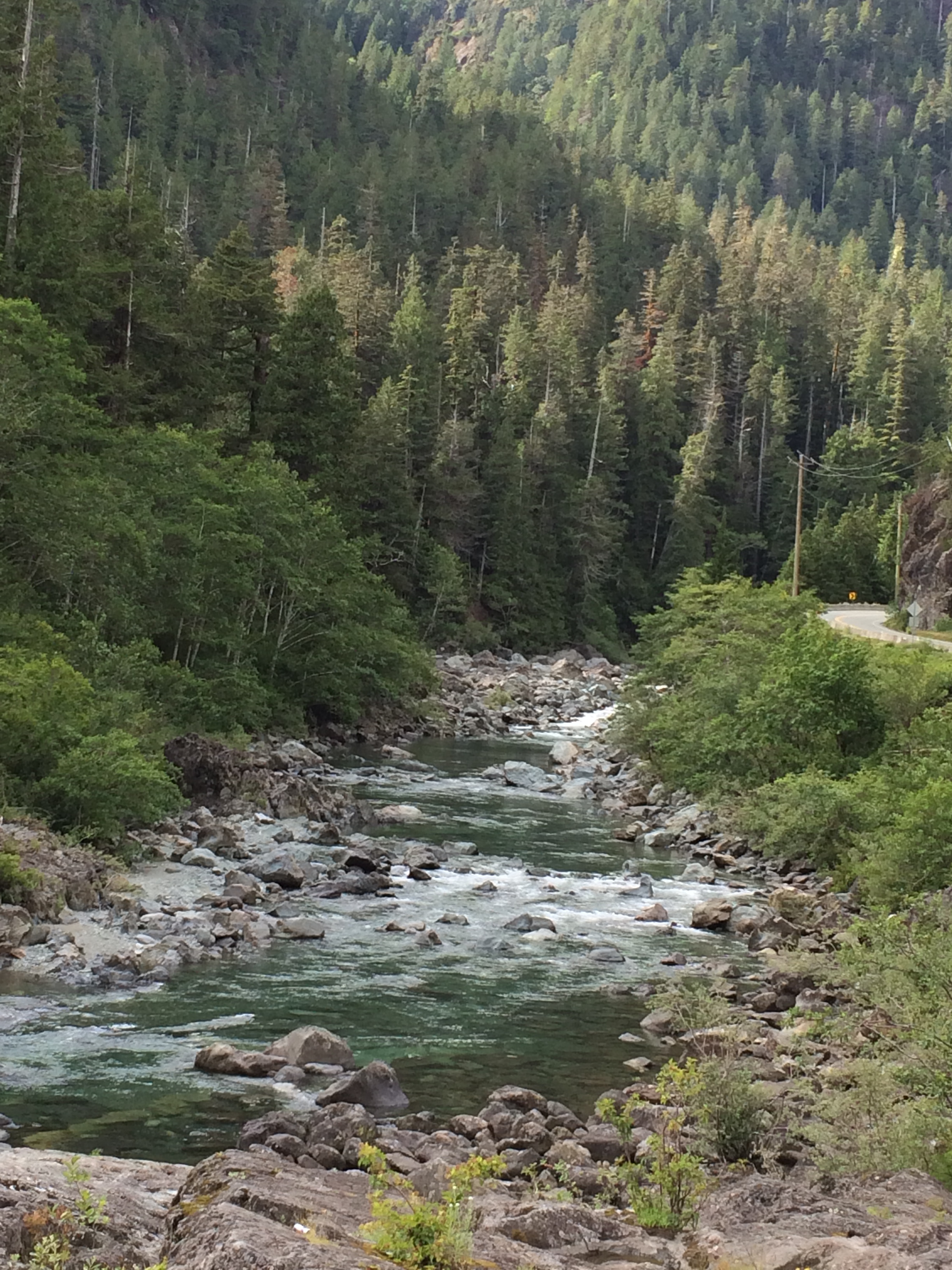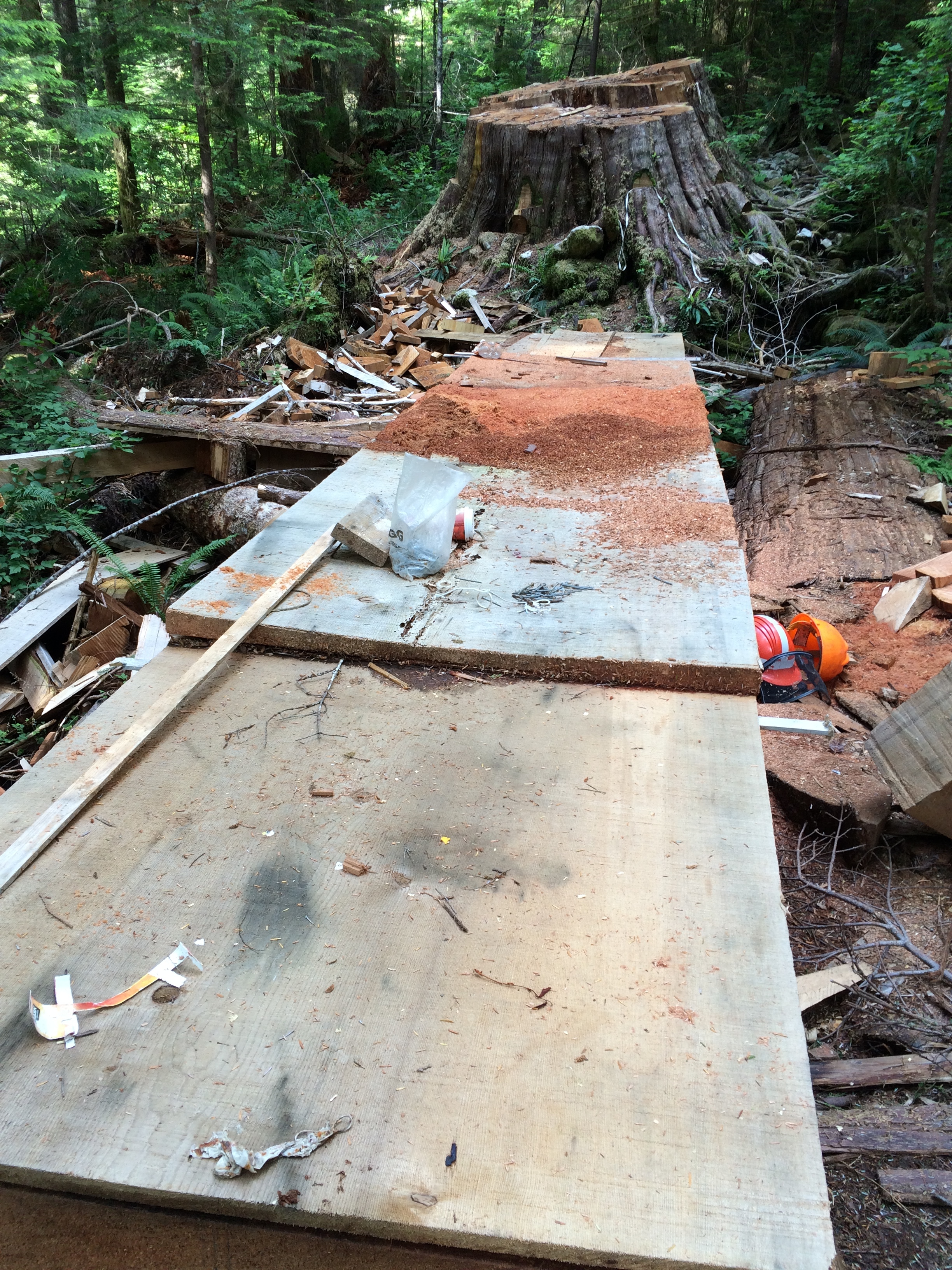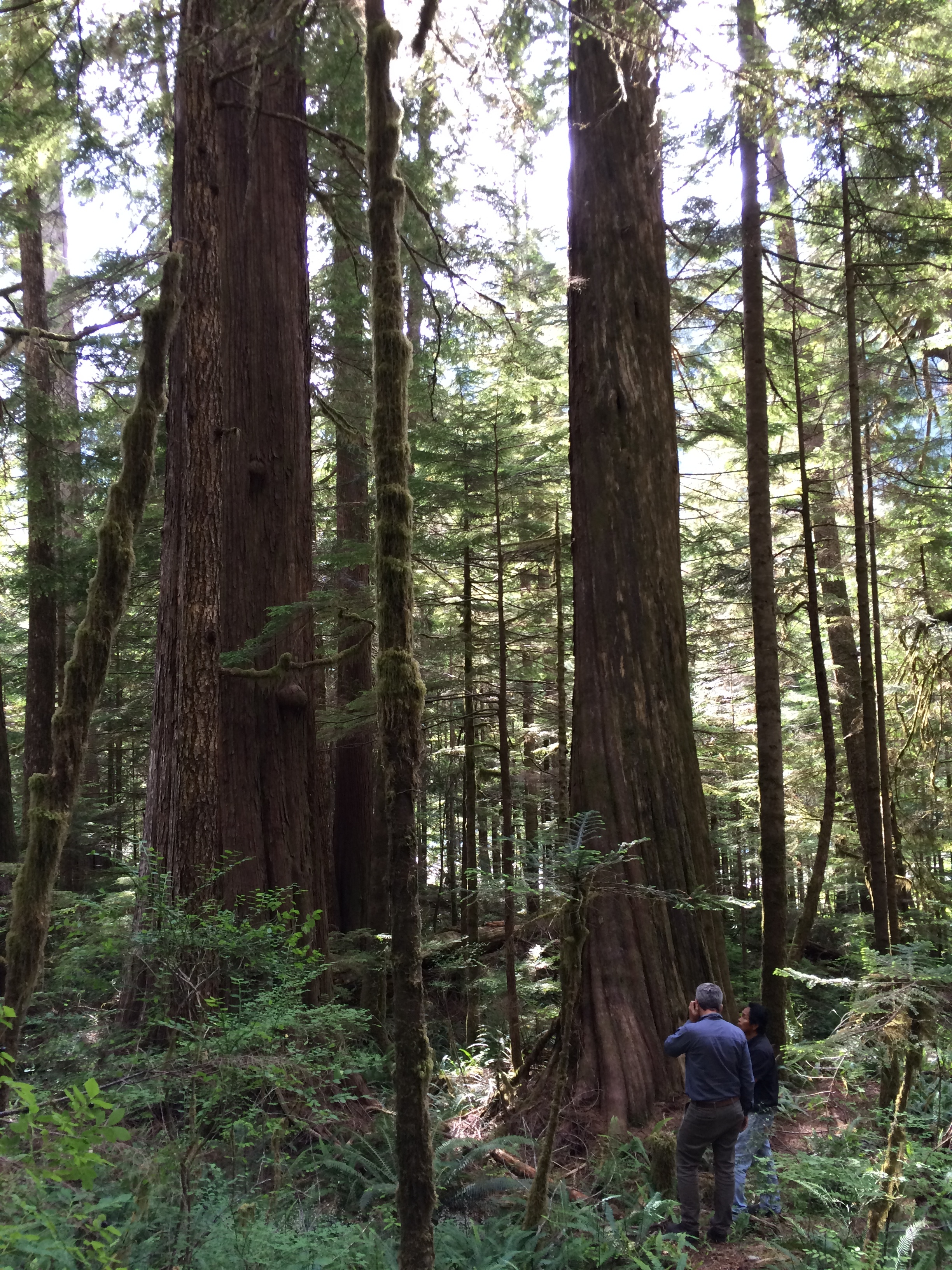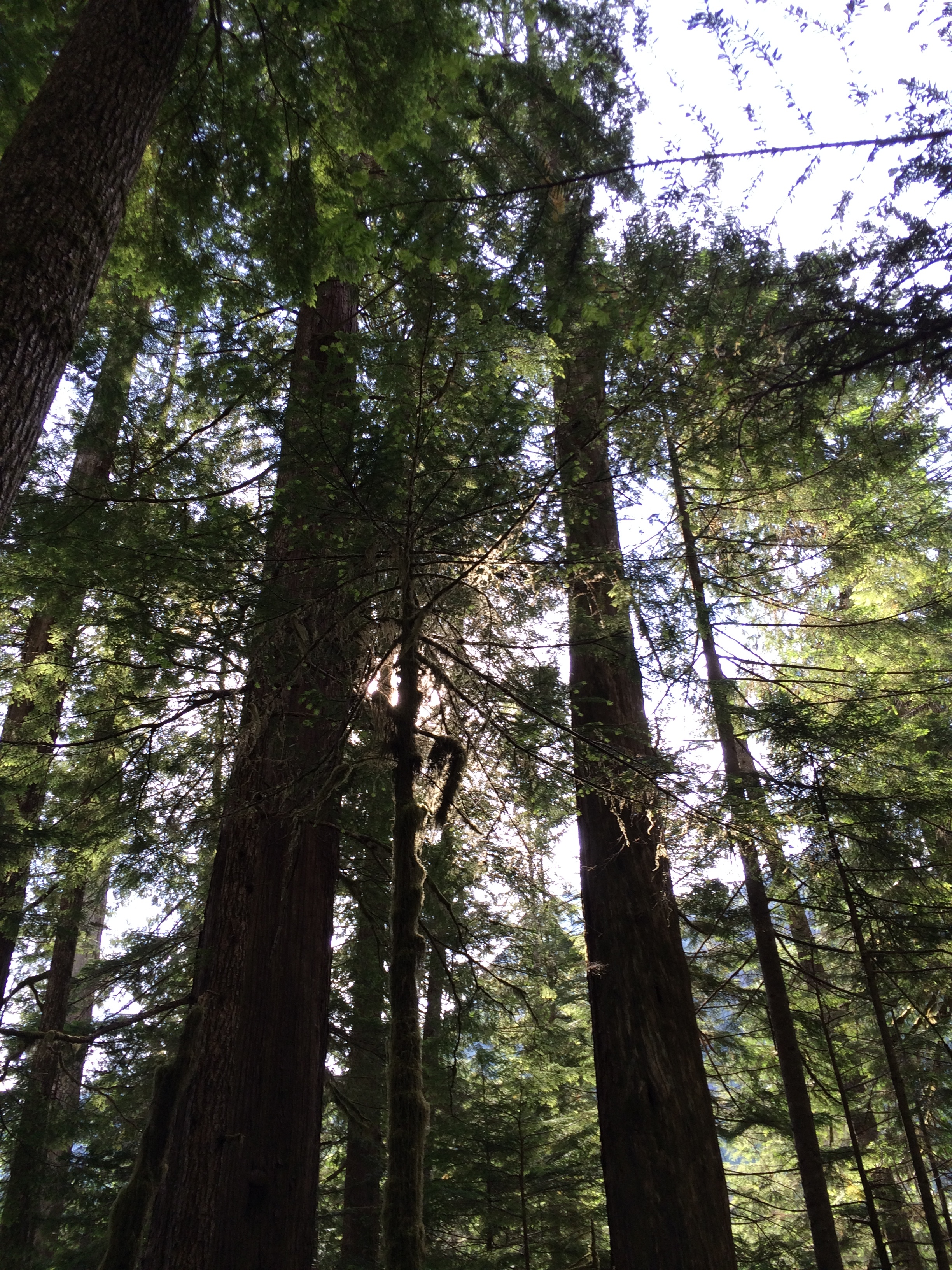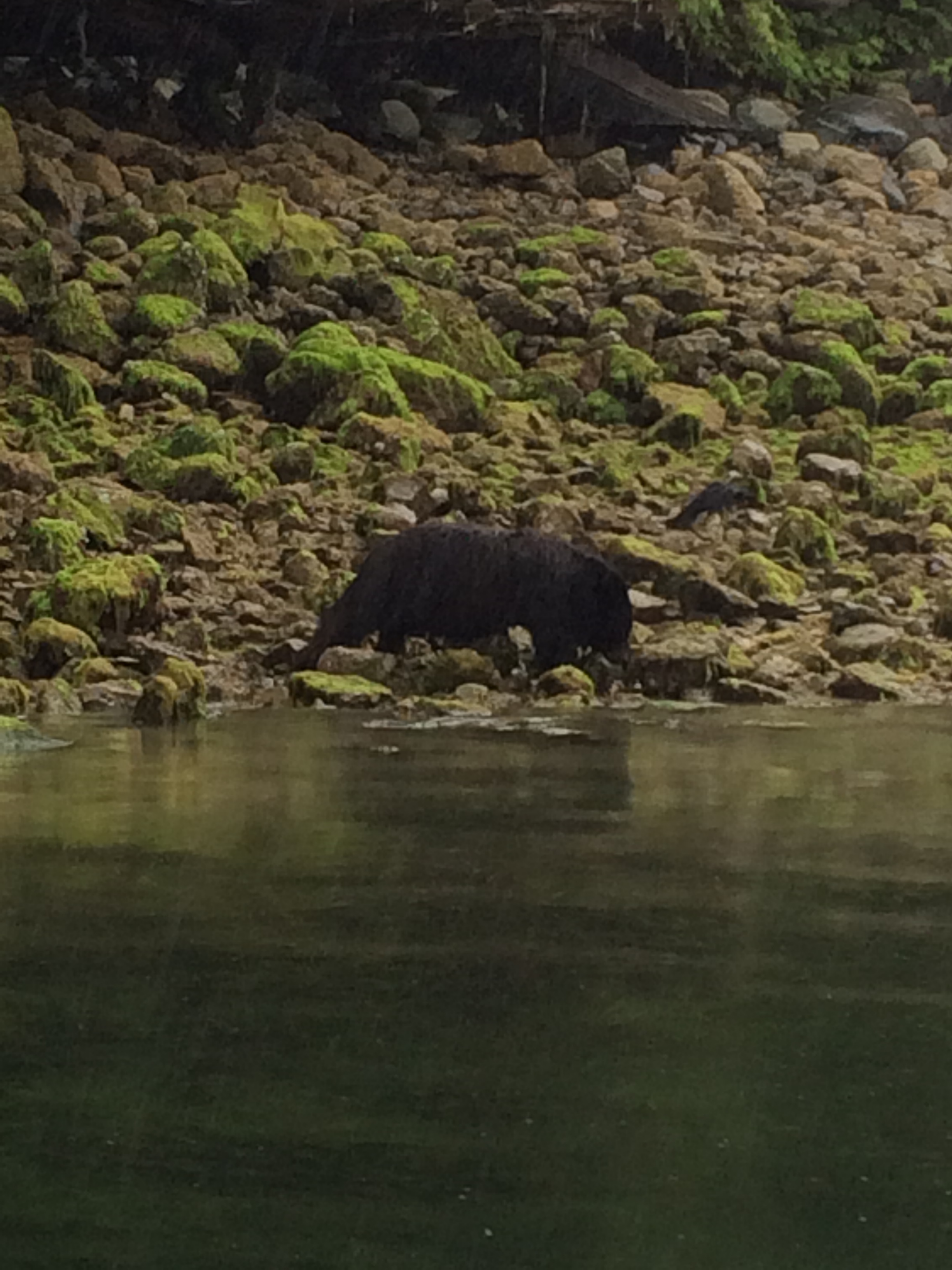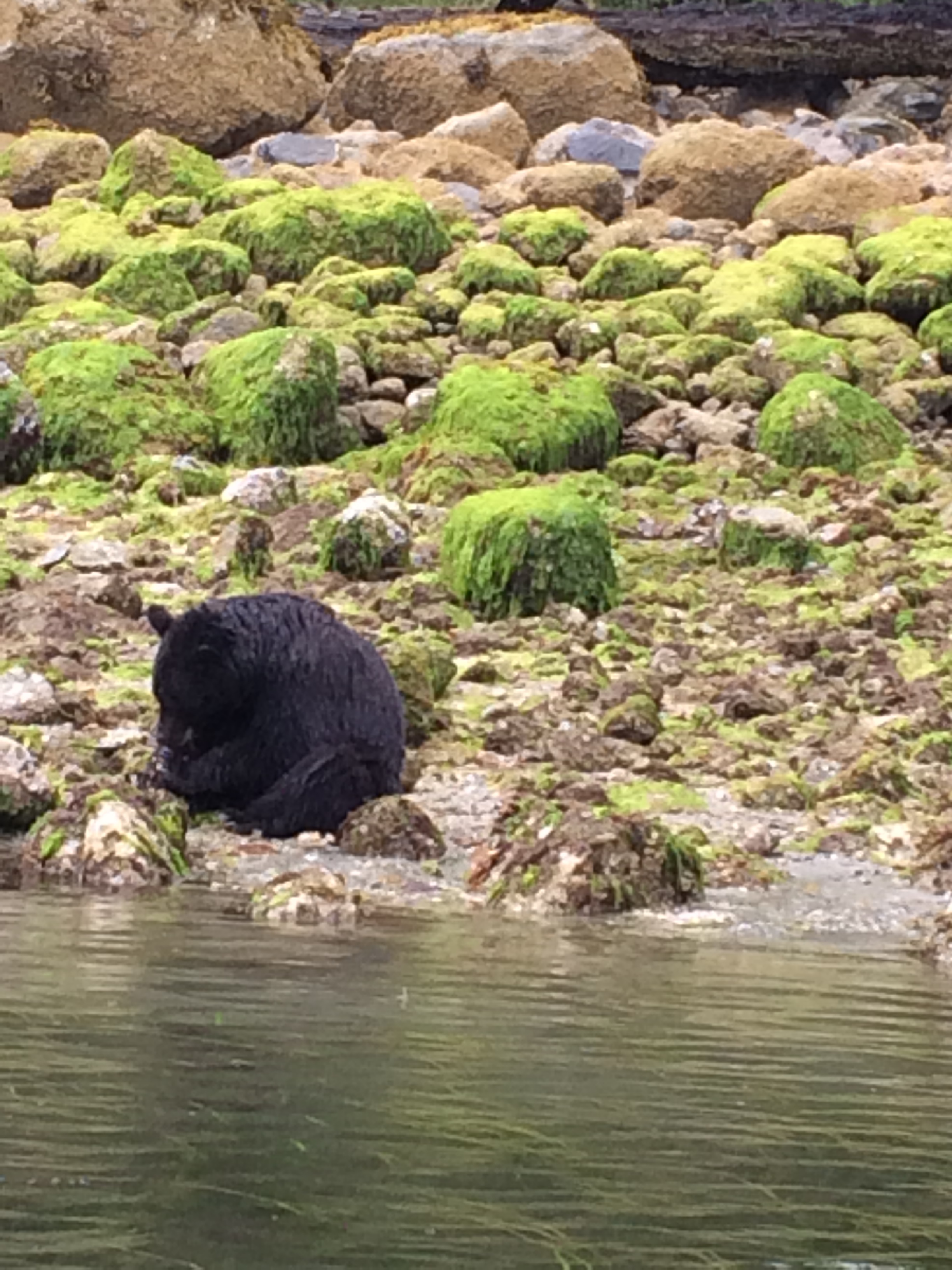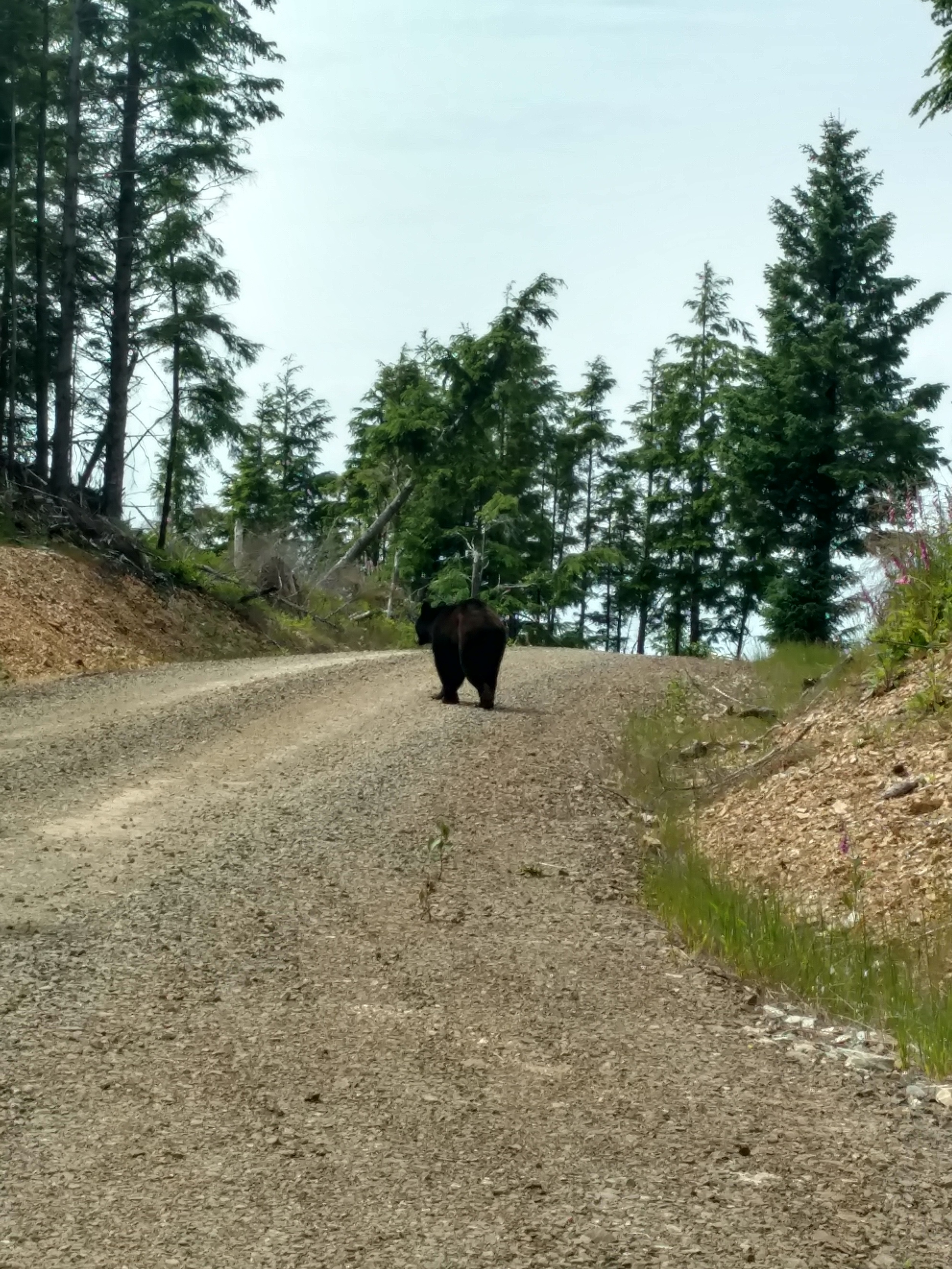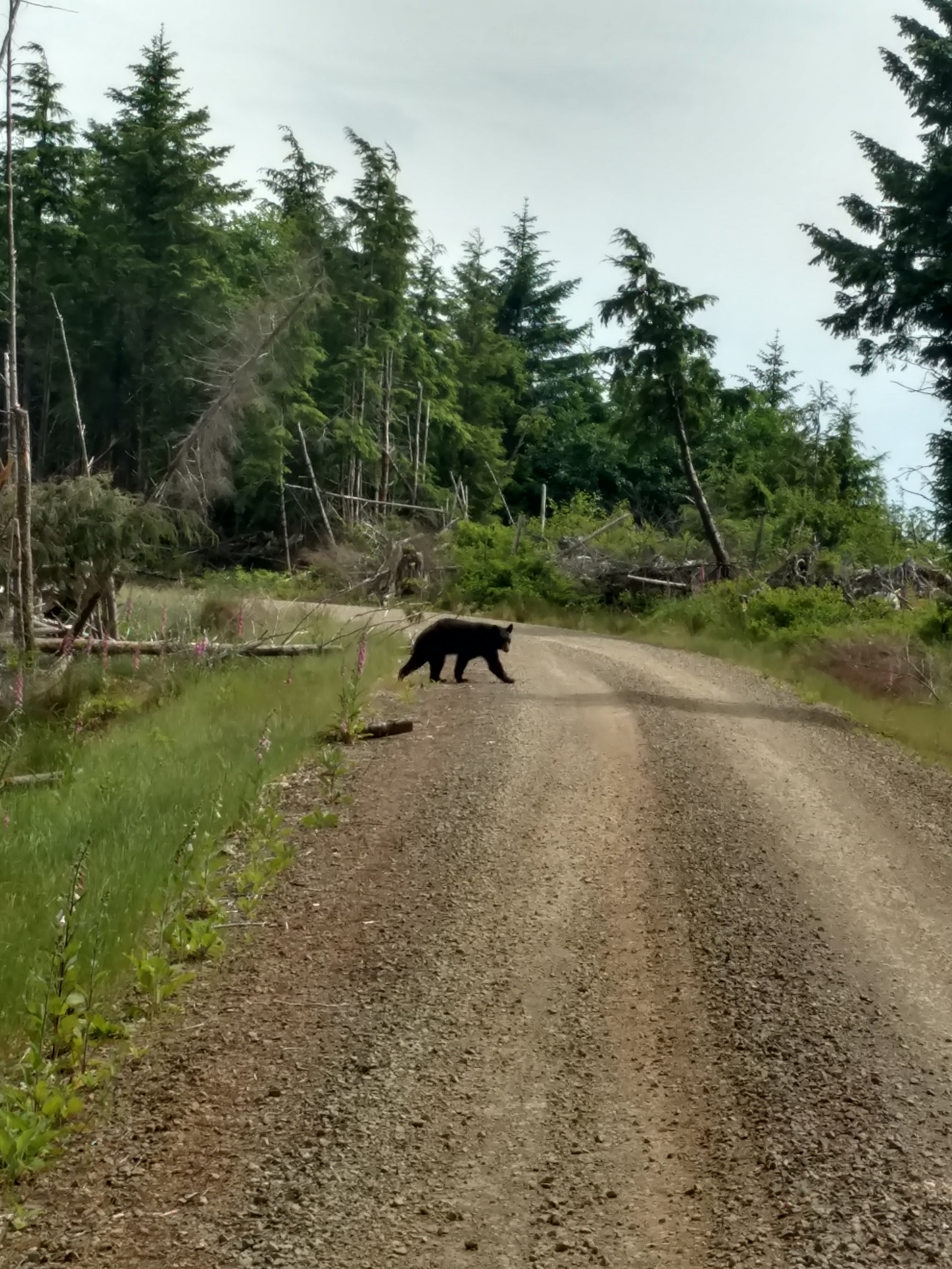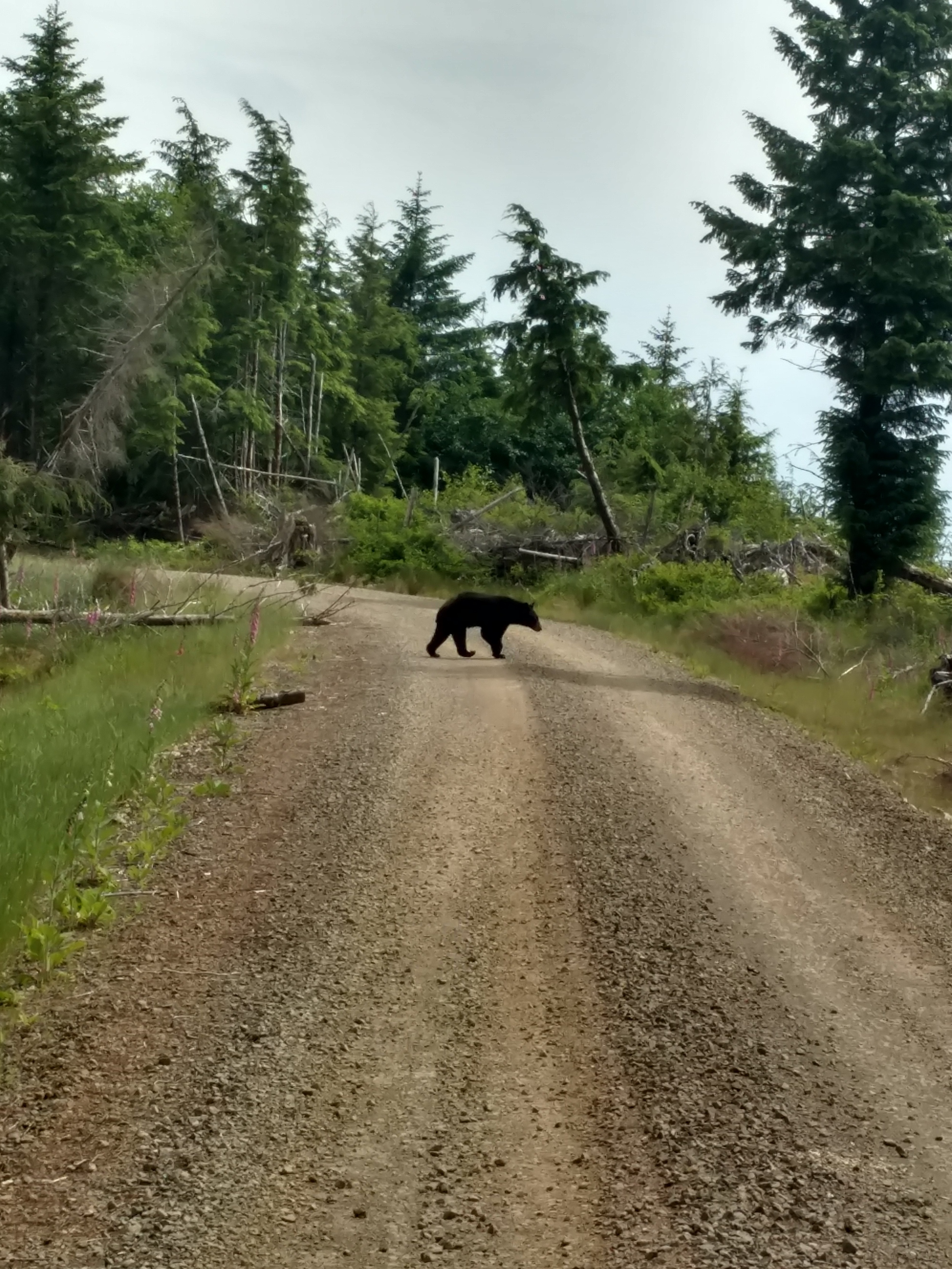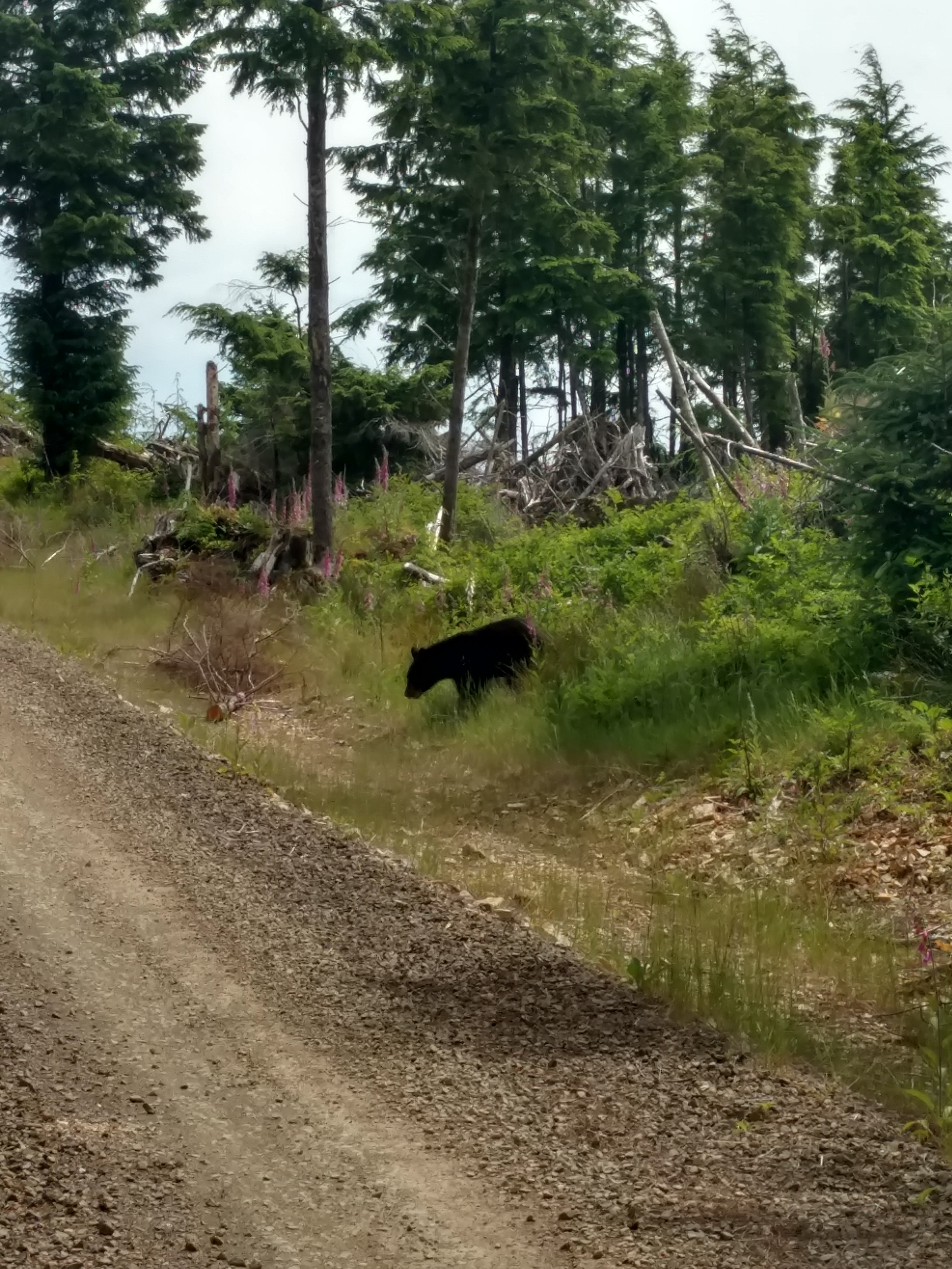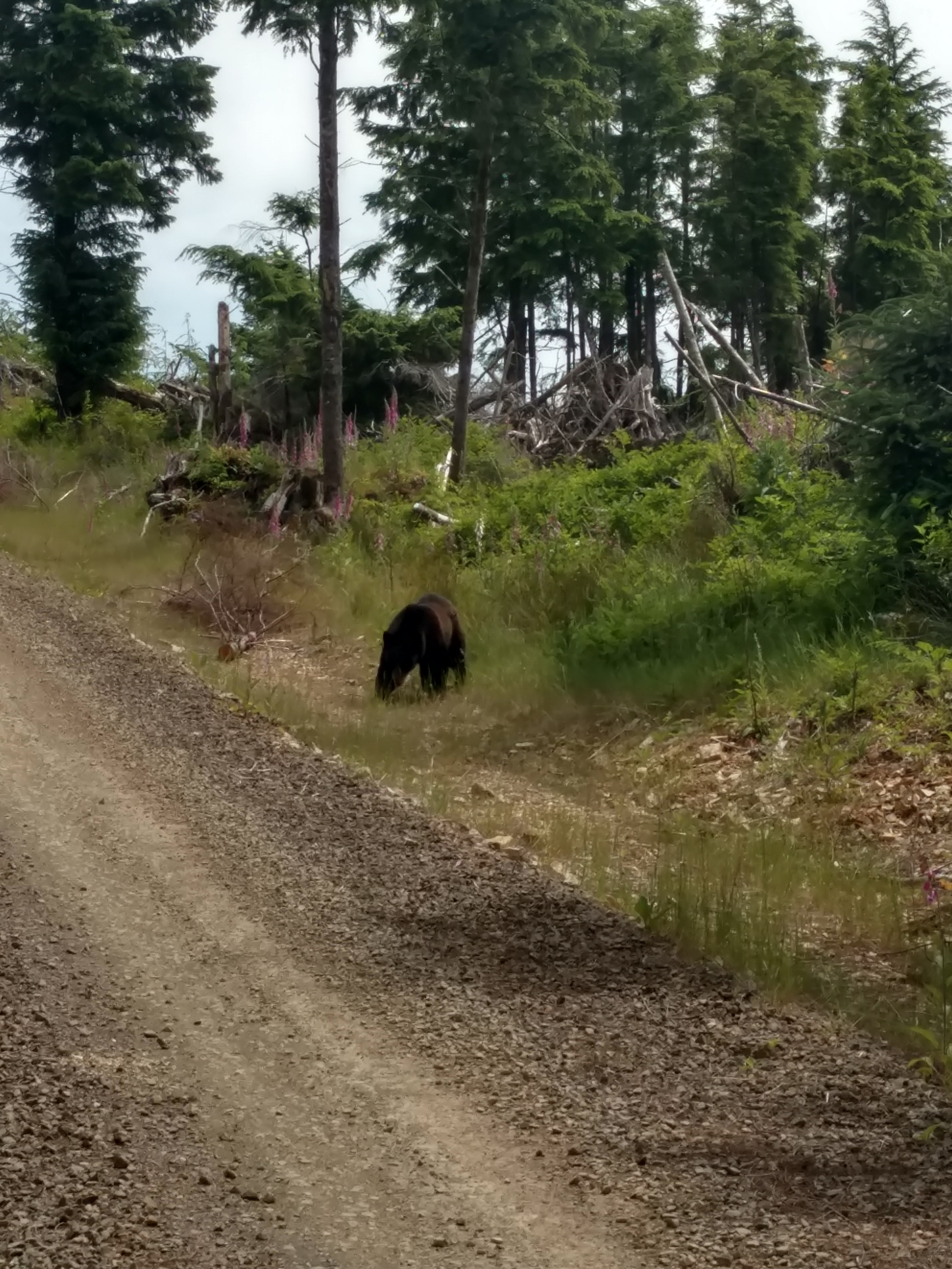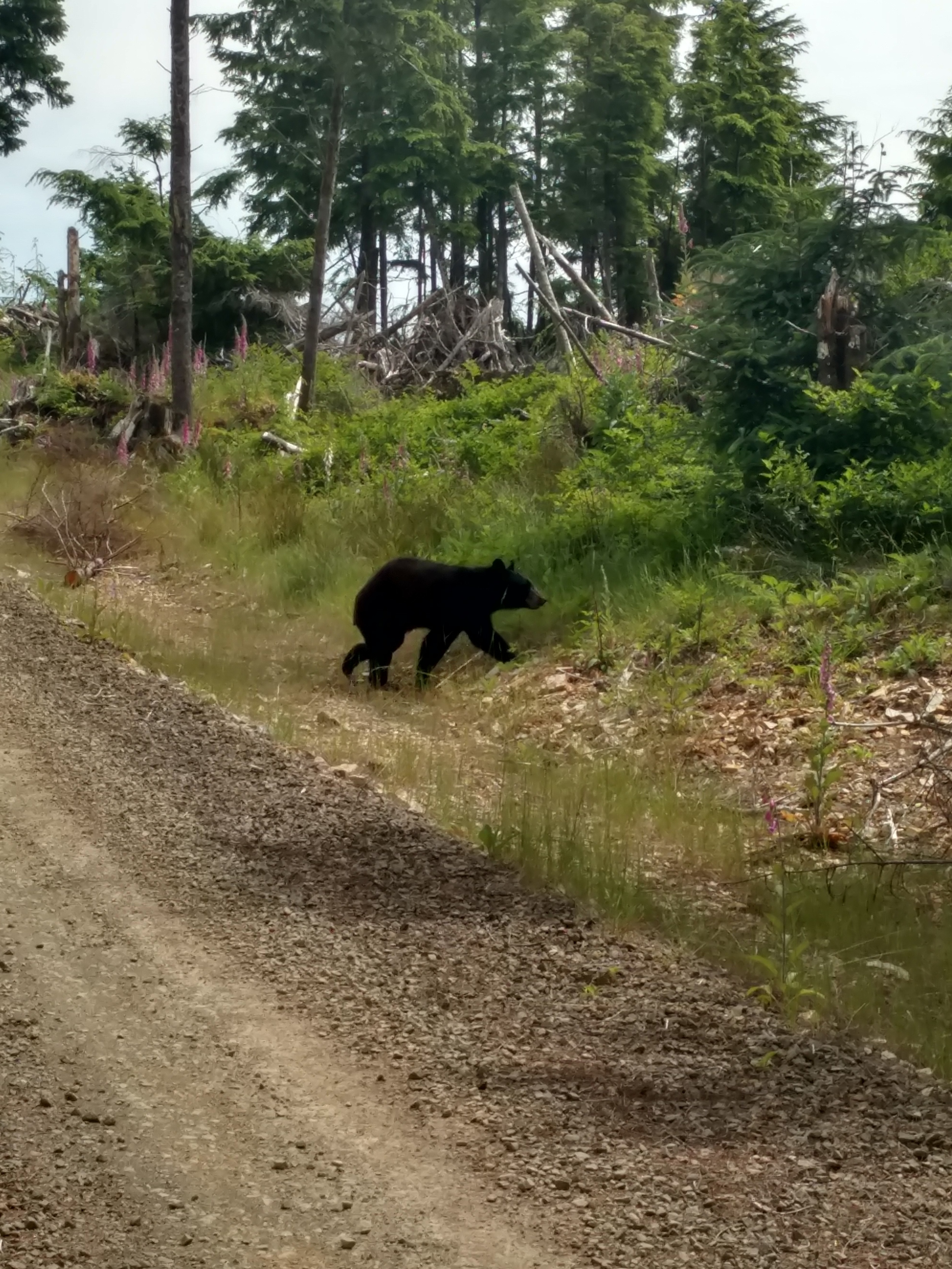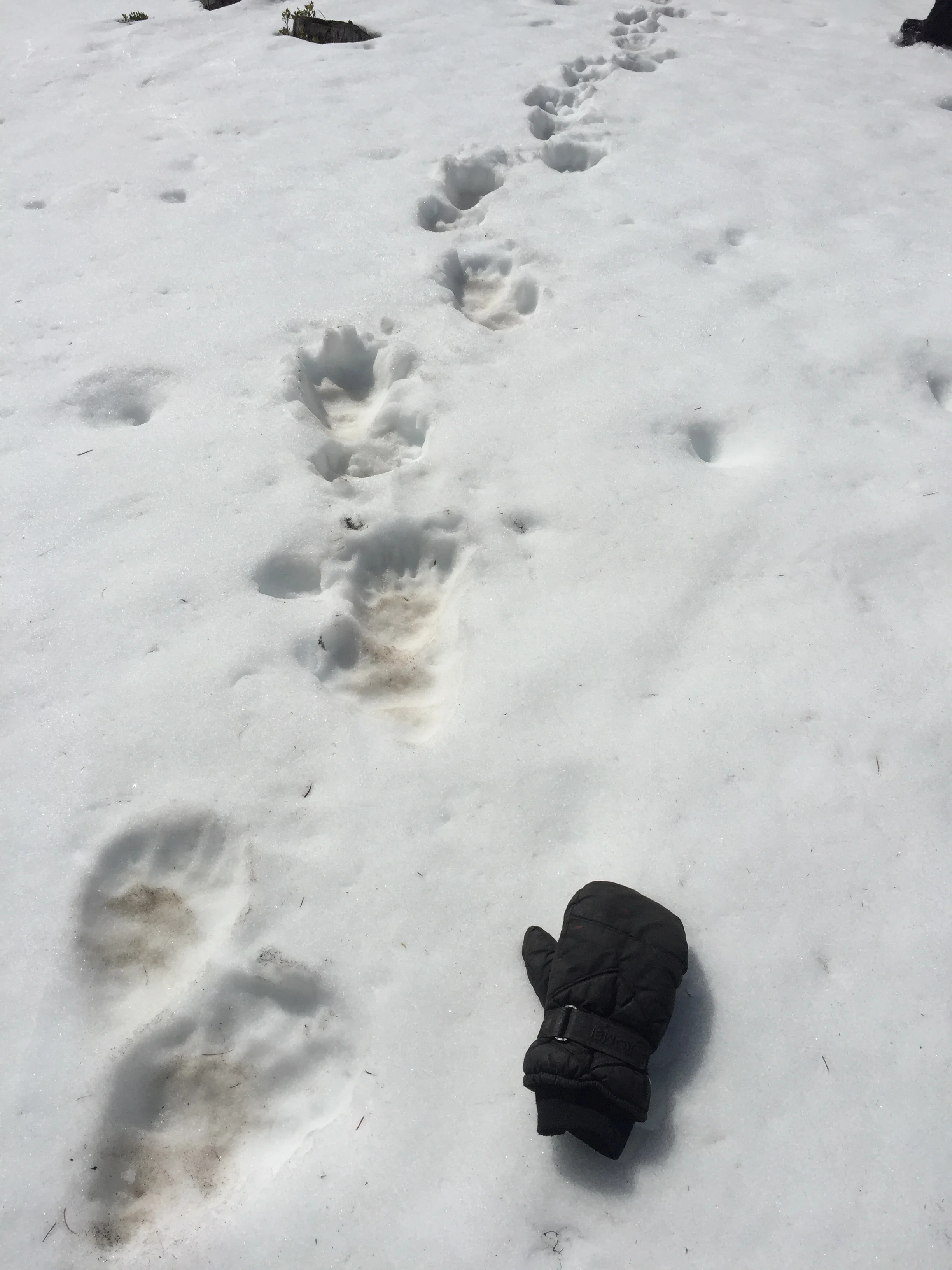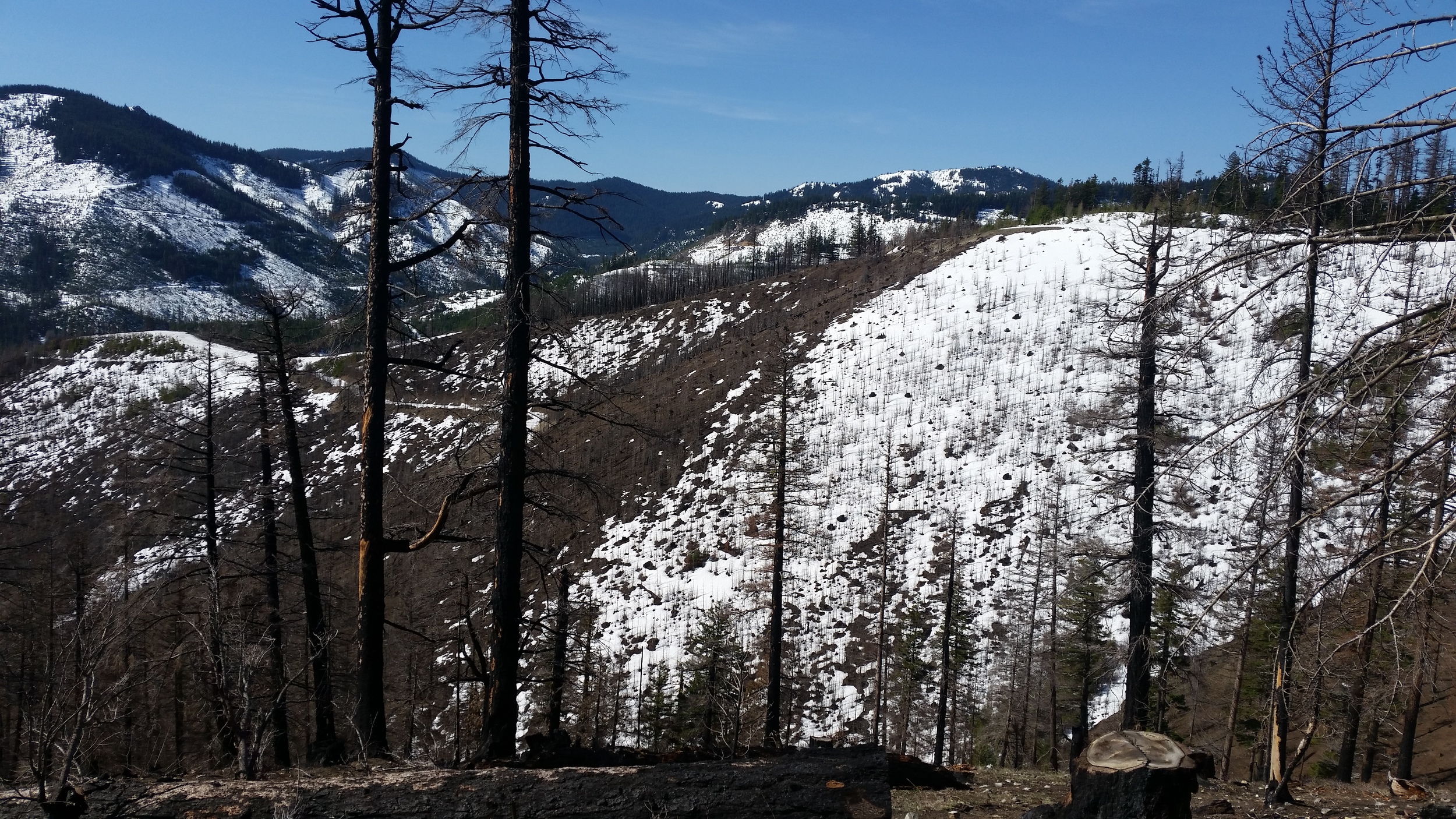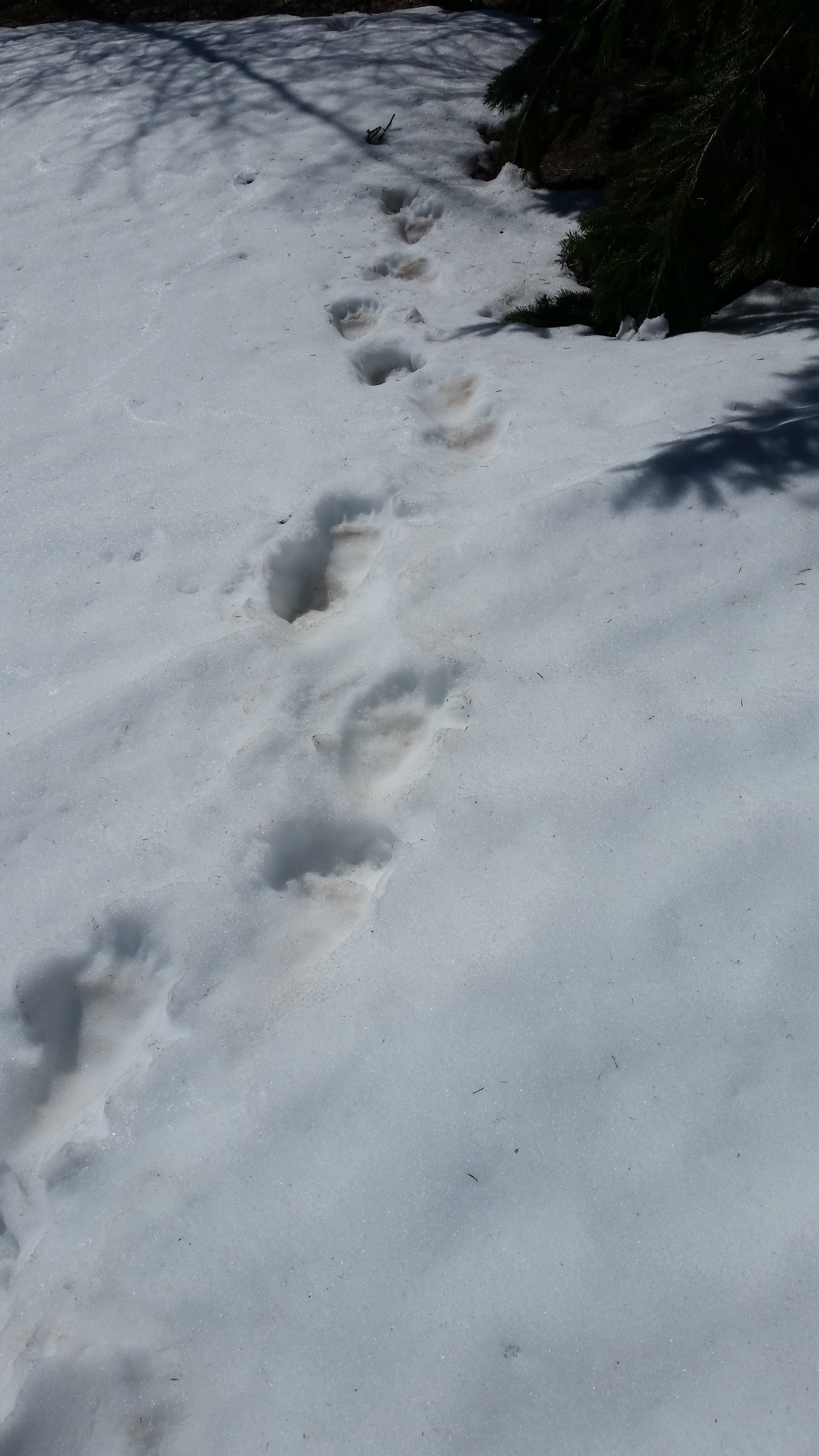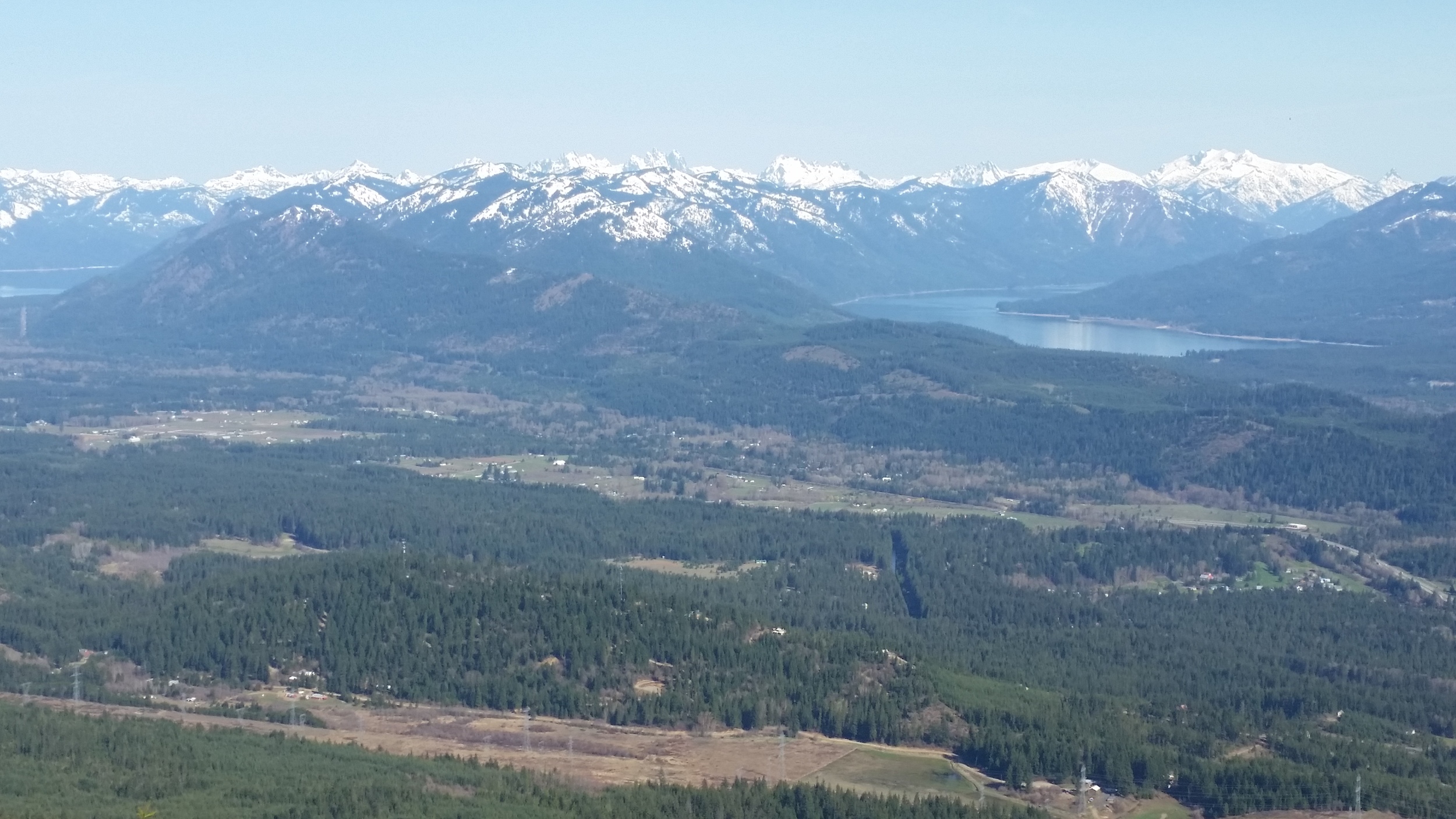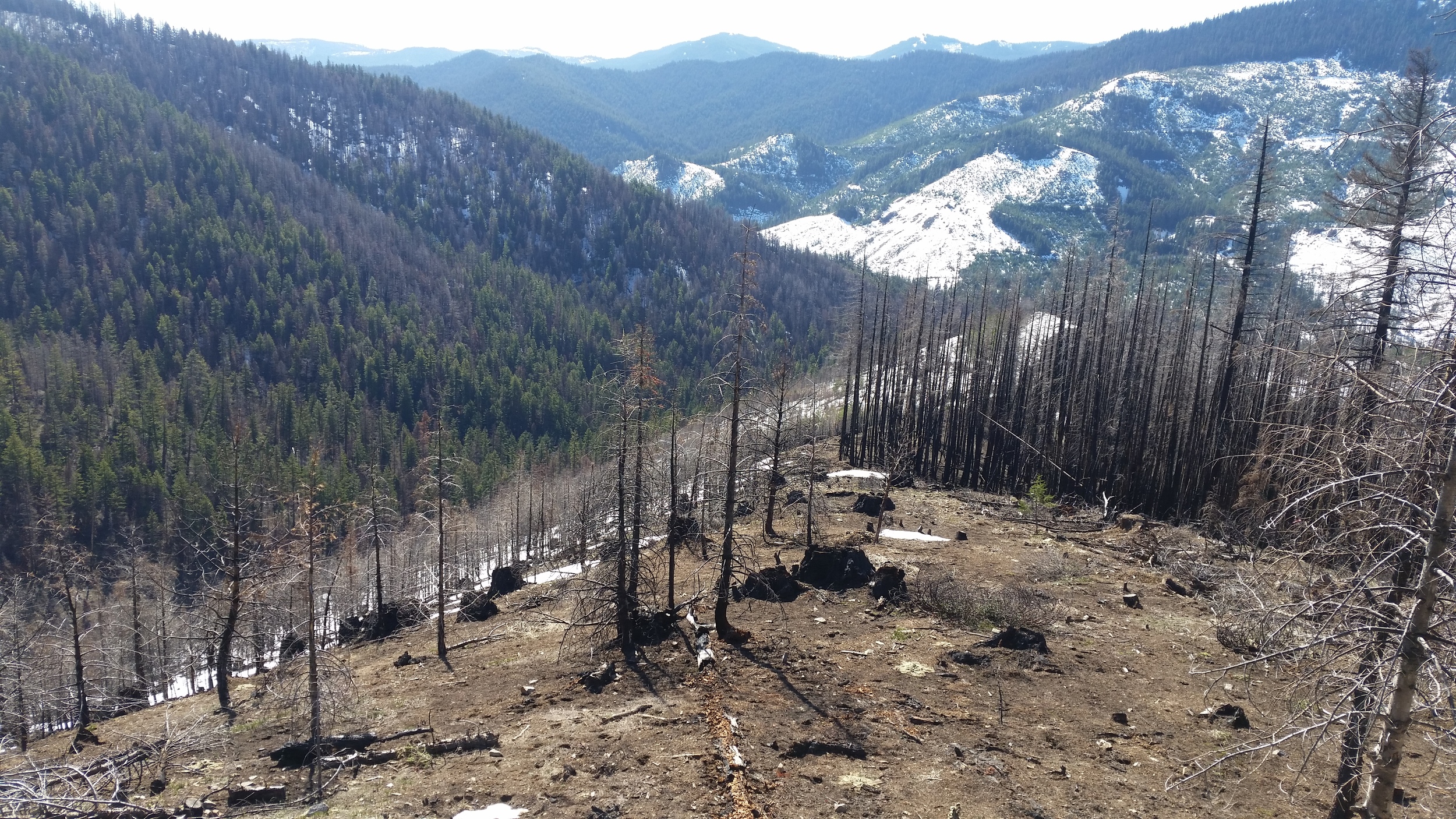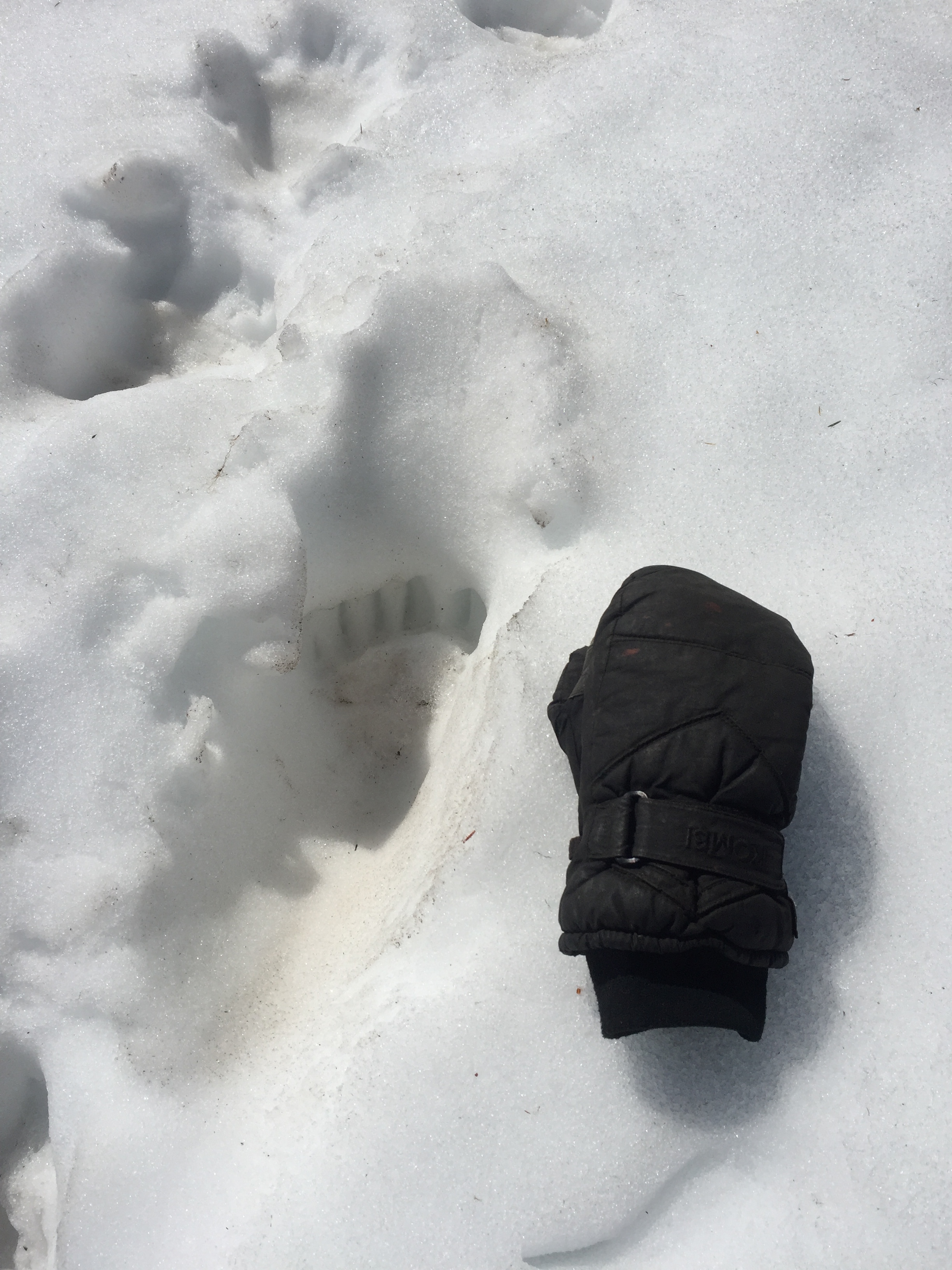The hunting season for grizzly bears in British Columbia is permanently closed. This achievement is a clear example of the potential created by investing in Indigenous leadership
Camping in Paradise
Written & Photographed by Carrie Krueger, Director of Marketing, The Nature Conservancy in Washington
Clayoquot Sound, on Canada’s Vancouver Island is a spectacular place of sea and forests, centuries of culture, and home to First Nations with deep connections to the land and water. As the region’s indigenous people look for ways to protect cherished natural resources they are also sharing the area’s abundance with others. One example: The Lone Cone – a campground and hostel located in the heart of this rich ecological treasure and open to all to enjoy.
A short boat trip takes visitors to the Lone Cone, for camping, dormitory style housing or even private rooms along with a community kitchen, game room and hot tub. But it’s the access to nature that attracts visitors – from tents with a view to hiking trails and beaches, nature abounds. Kayaks, paddleboards and mountain bikes are available as part of the eco-tourism experience.
The Lone Cone is an example of community based conservation that protects nature while creating local economic opportunities. The site has created more than 20 jobs and attracts visitors from around the world. It is run by the Ahousaht First Nation which has plans for other sites and attractions in the area.
It’s a tiny piece of the vast Emerald Edge, a Nature Conservancy priority that spans from Washington, through British Columbia and all the way to Alaska. The landscape holds the largest intact coastal rainforest and is of massive ecological importance to the world. Through our work we are committed to partnership with indigenous and local people to heal the lands and waters while creating new opportunities for local wealth creation, economic development and entrepreneurship.
LEARN MORE ABOUT LONE CONE
LEARN MORE ABOUT OUR WORK PROTECTING THE EMERALD EDGE
Black Bears Roam at Ellsworth Creek
Written & Photographed by Kyle Smith, Field Forester
Late Spring at The Nature Conservancy’s Ellsworth Creek Preserve in Southwest Washington is a magical place for wildlife viewing. Spring rains bring out amphibians in huge numbers such as the tailed frog, ruffed skinned newts, Columbia torrent salamander, pacific giant salamander. In fact, a survey conducted by the Washington Natural Heritage Program and TNC scientists found that Ellsworth Creek had on of the highest populations of amphibians in Washington State. Amphibians aren’t the only things that roam the misty forest floors in Ellsworth Creek.
Black bears come out of their winter torpor to forage on grasses, berries and the fresh sapwood of actively growing trees. Southwest Washington and in particular Ellsworth Creek have some of the largest numbers of black bears in the lower 48. We were lucky to come across these beautiful black bears at the preserve recently!
The huge old growth forests of Ellsworth Creek offer excellent denning sites and the productive soils and over eight feet of annual prescription grow huge thickets of huckleberries, salmon berries and salal berries that bears plump up on all summer long. High among the forested trees tops a small robin sized bird called the marbled murrelet flies in at over 60 mph to nest up in the old growth canopy with in the Ellsworth Creek. These small robin sized birds rare birds spend most of their life at sea but in late spring and early summer they can be seen flying in over Ellsworth Creek to use the large old growth tree branches to nest and raise their young before returning to the sea in late summer. Just off to the west looking down on to Willapa Bay, tens of thousands of dunlins and sandpipers swarm to Willapa Bays pristine waters to feed upon invertebrates with in the mudflats of the Bay.
Finding Tracks in the Central Cascades
Photographed by Brian Mize, Field Forester; Lara Gricar, Central Cascades Community Coordinator
Our Central Cascades forest team was lucky enough to see bear tracks on our land! The tracks were on our land on the South Cle Elum Ridge. It is likely the bear recently awoke from a winter of slumber! See the photos in the slideshow above!







